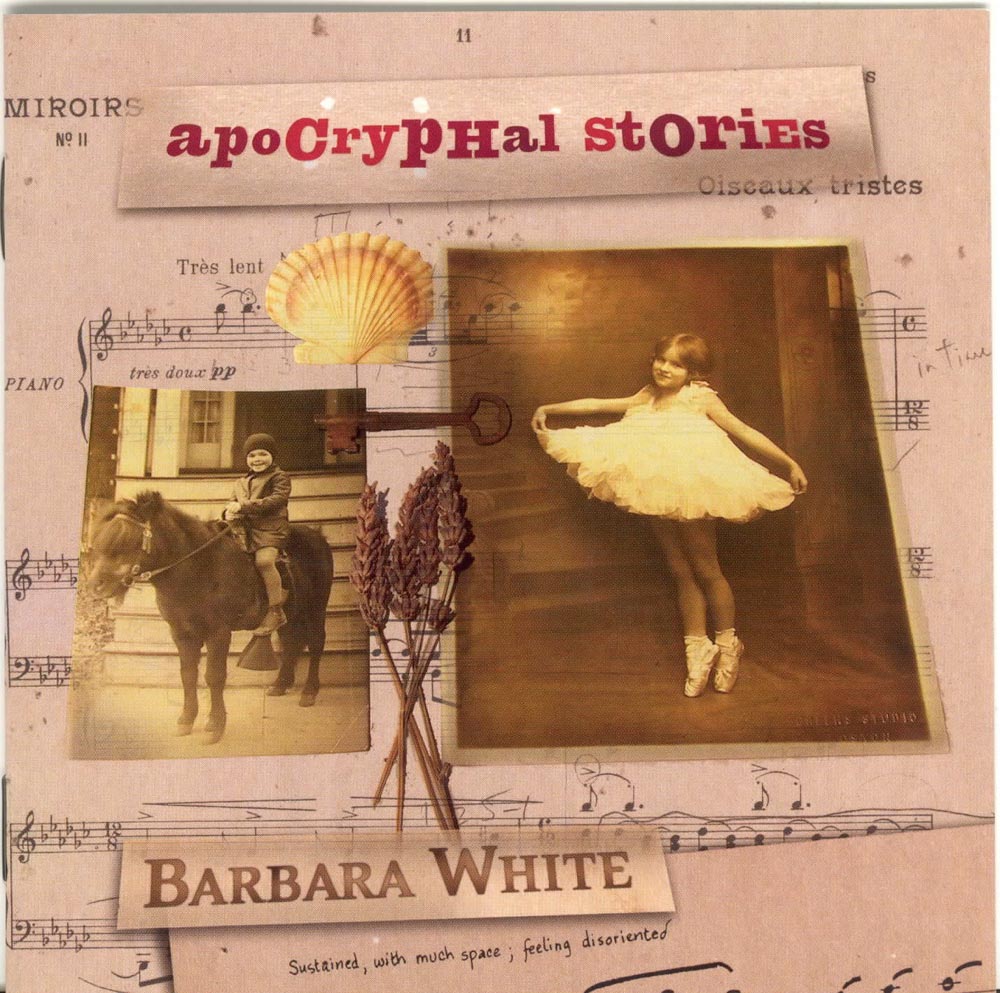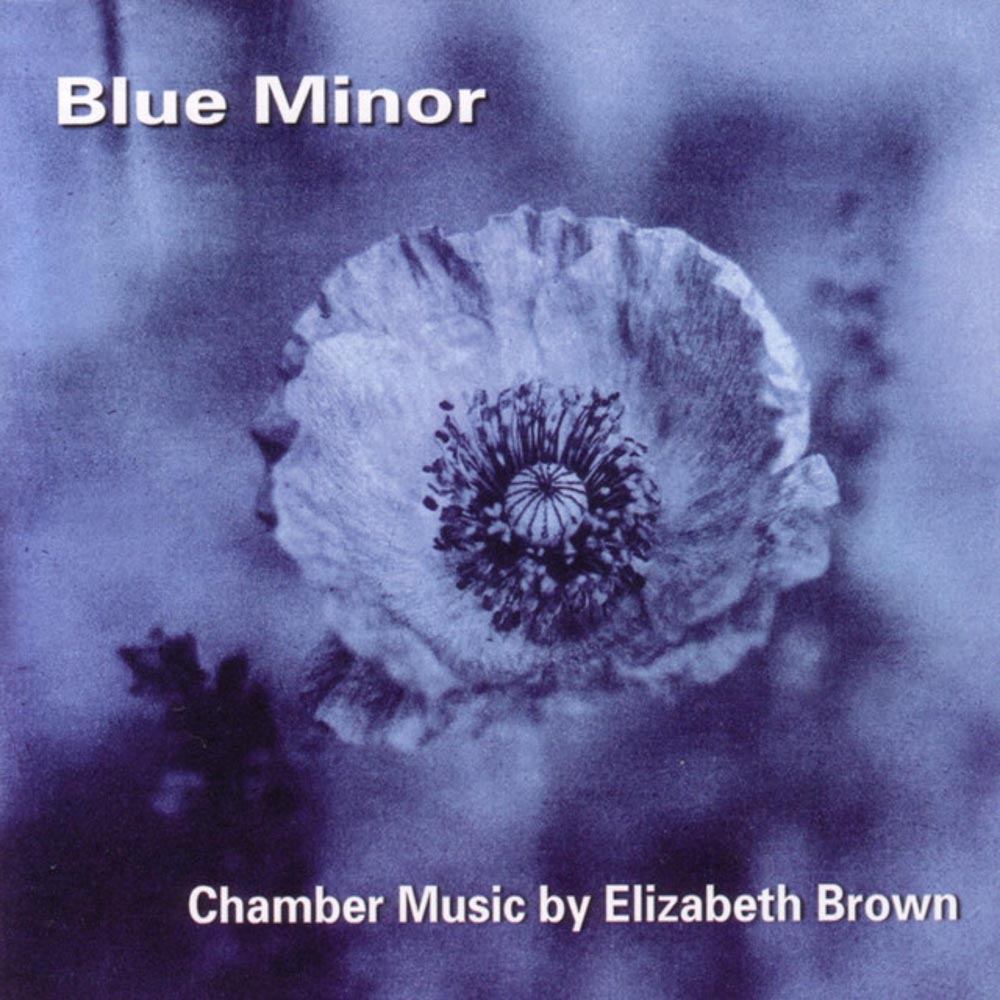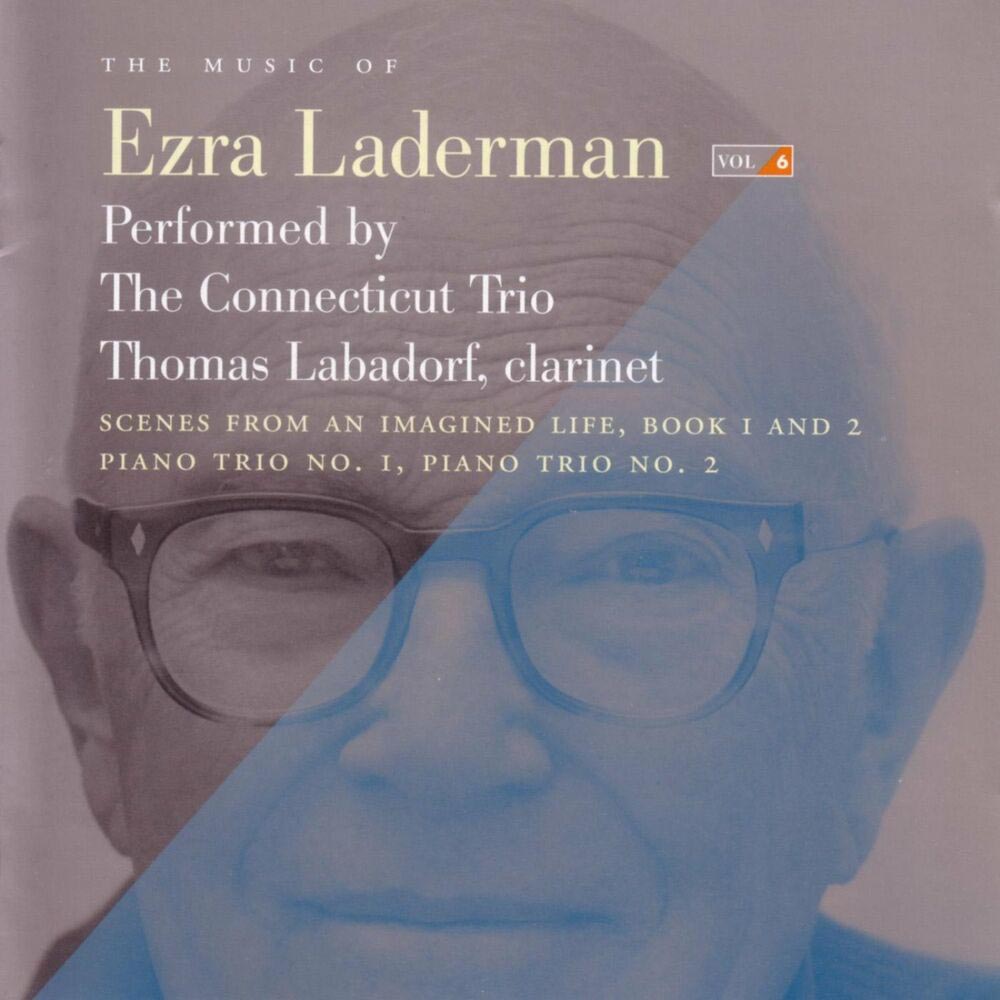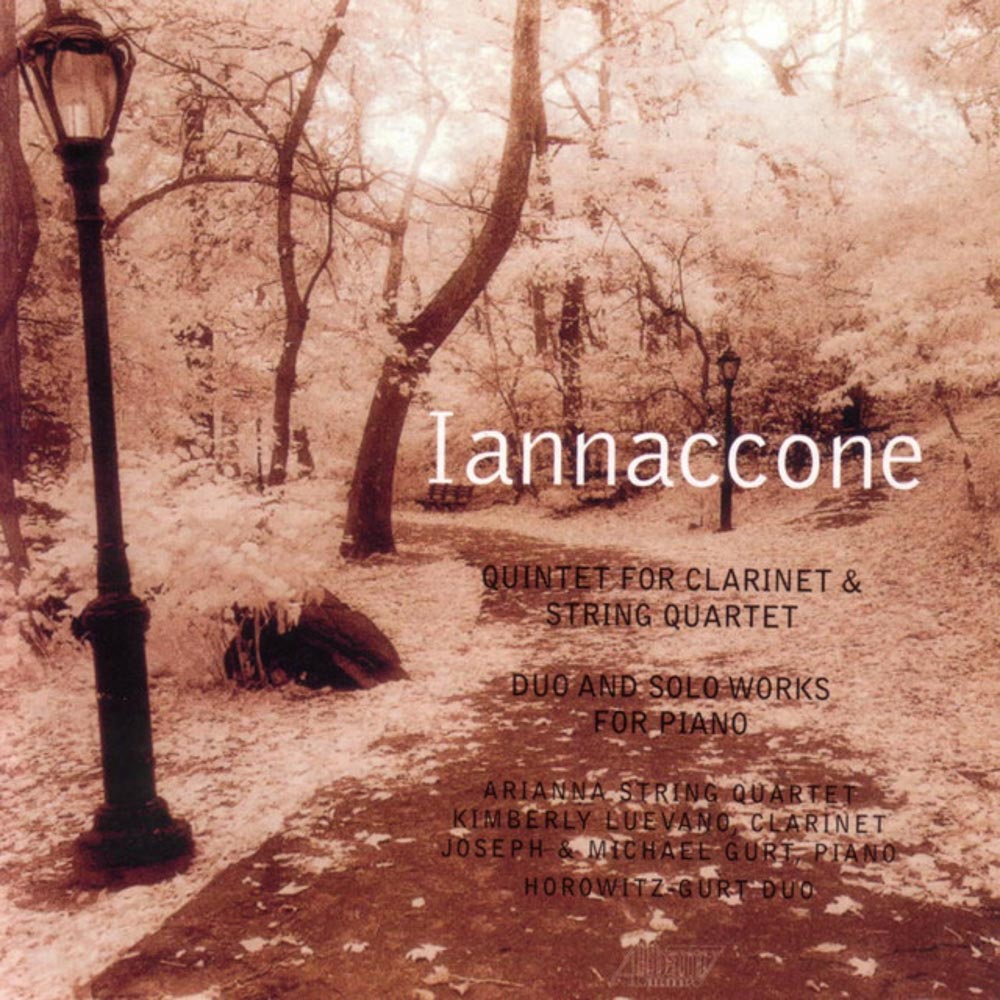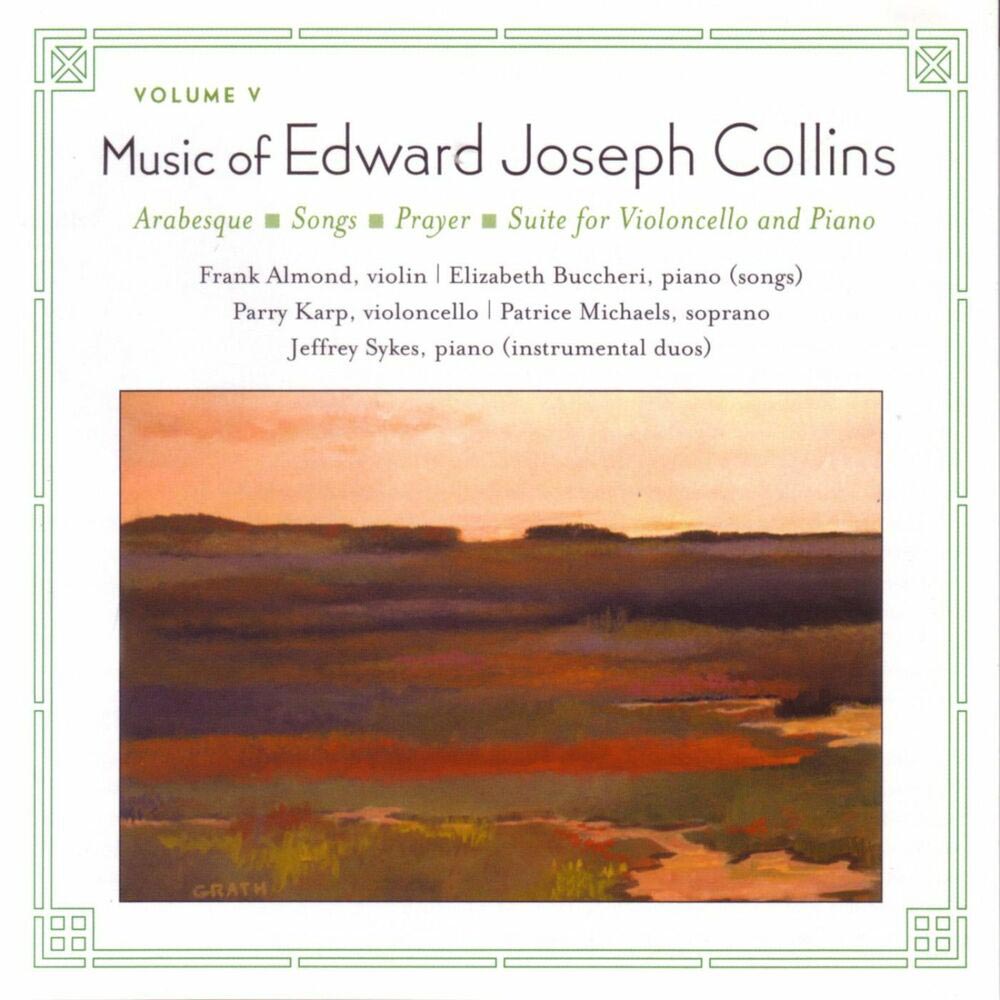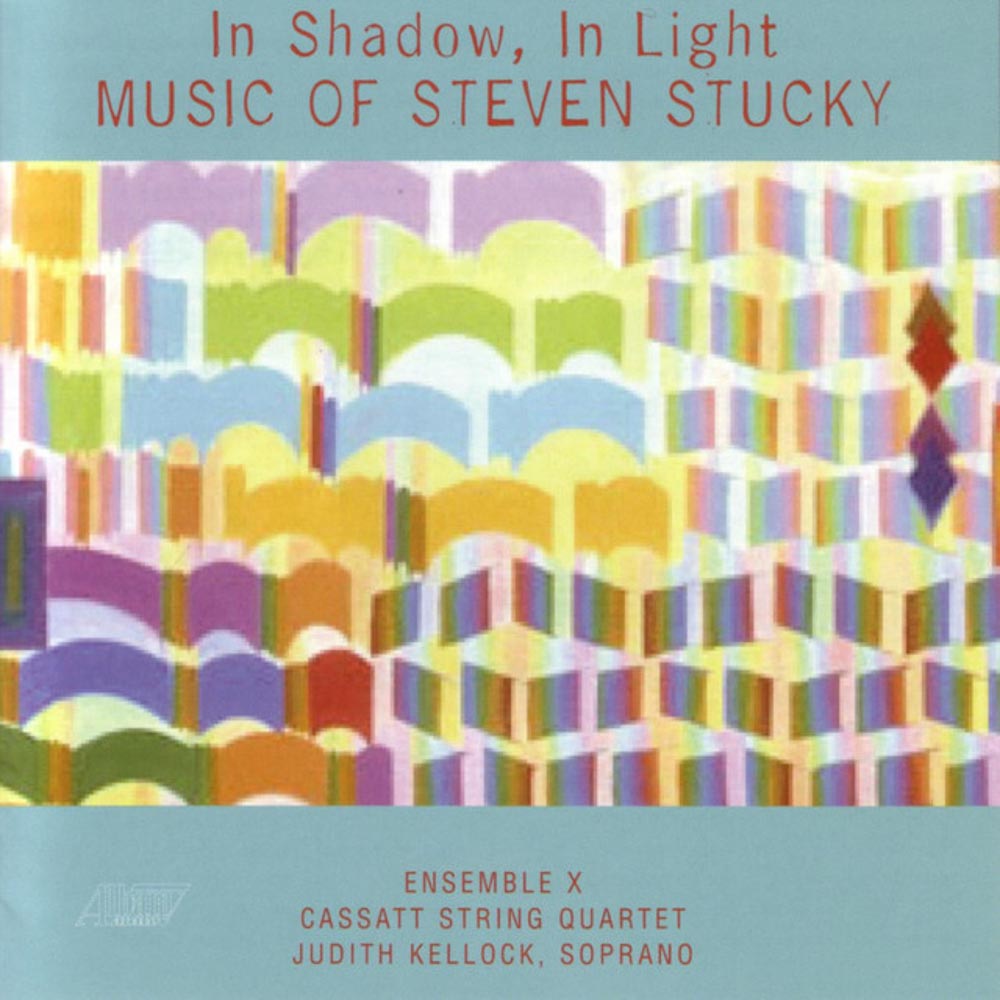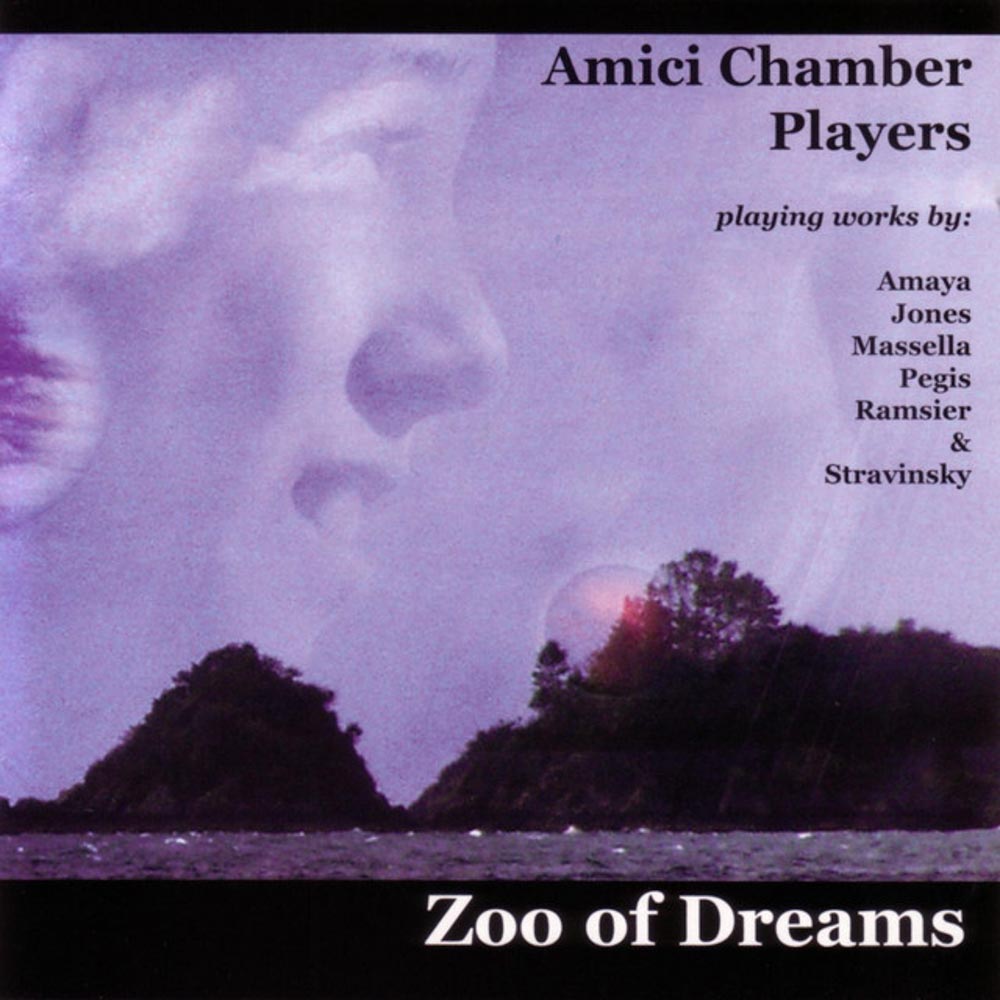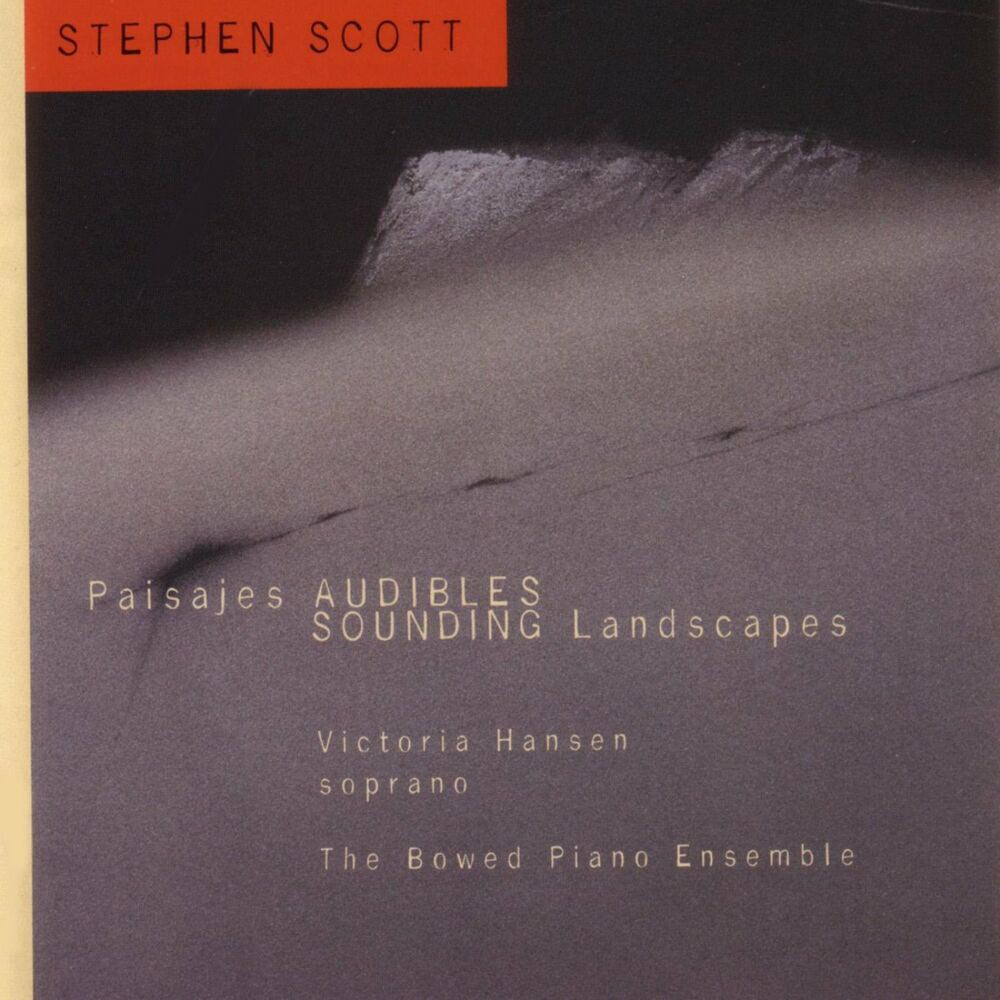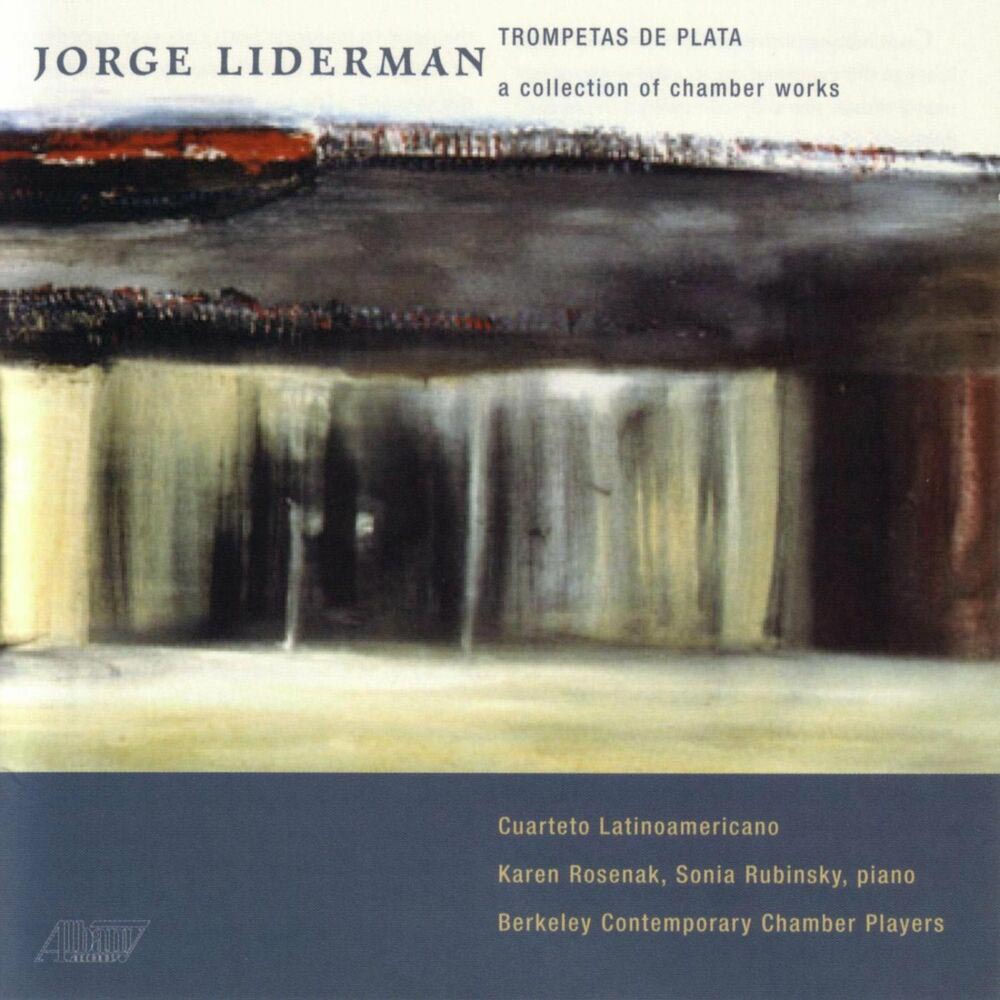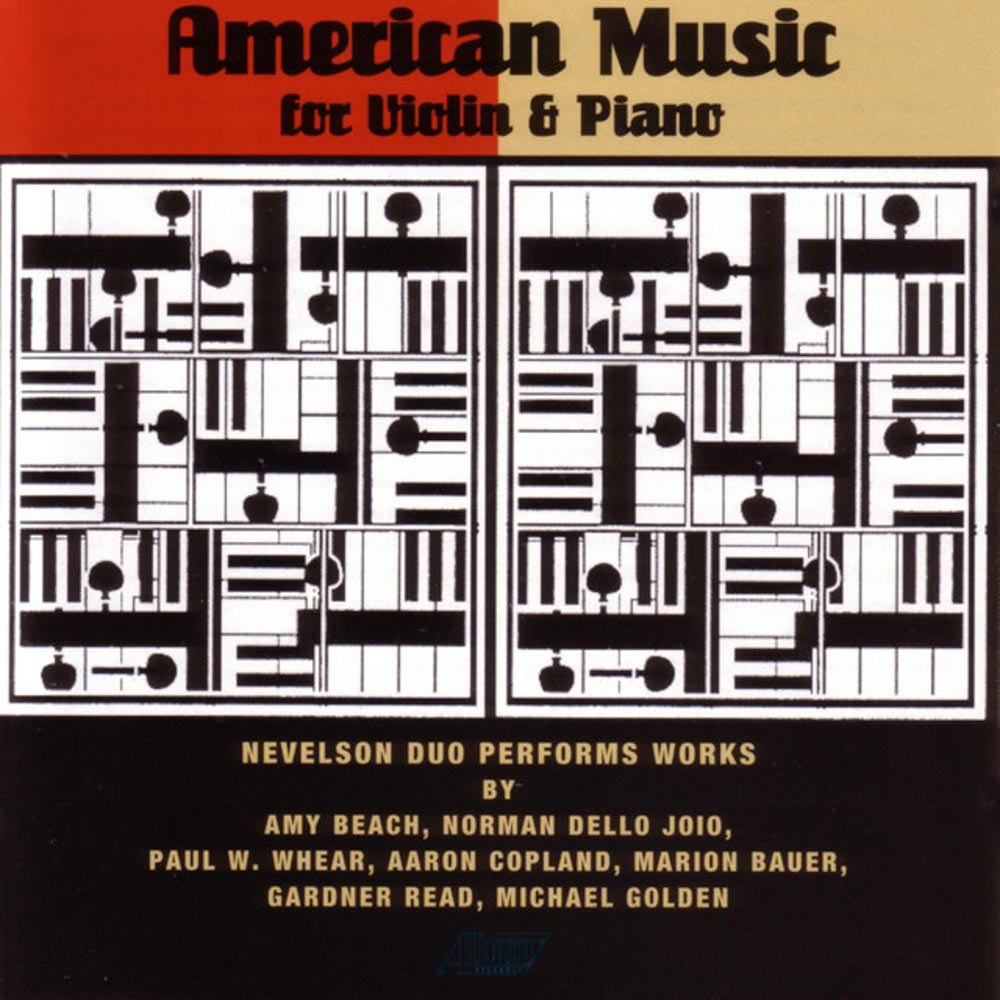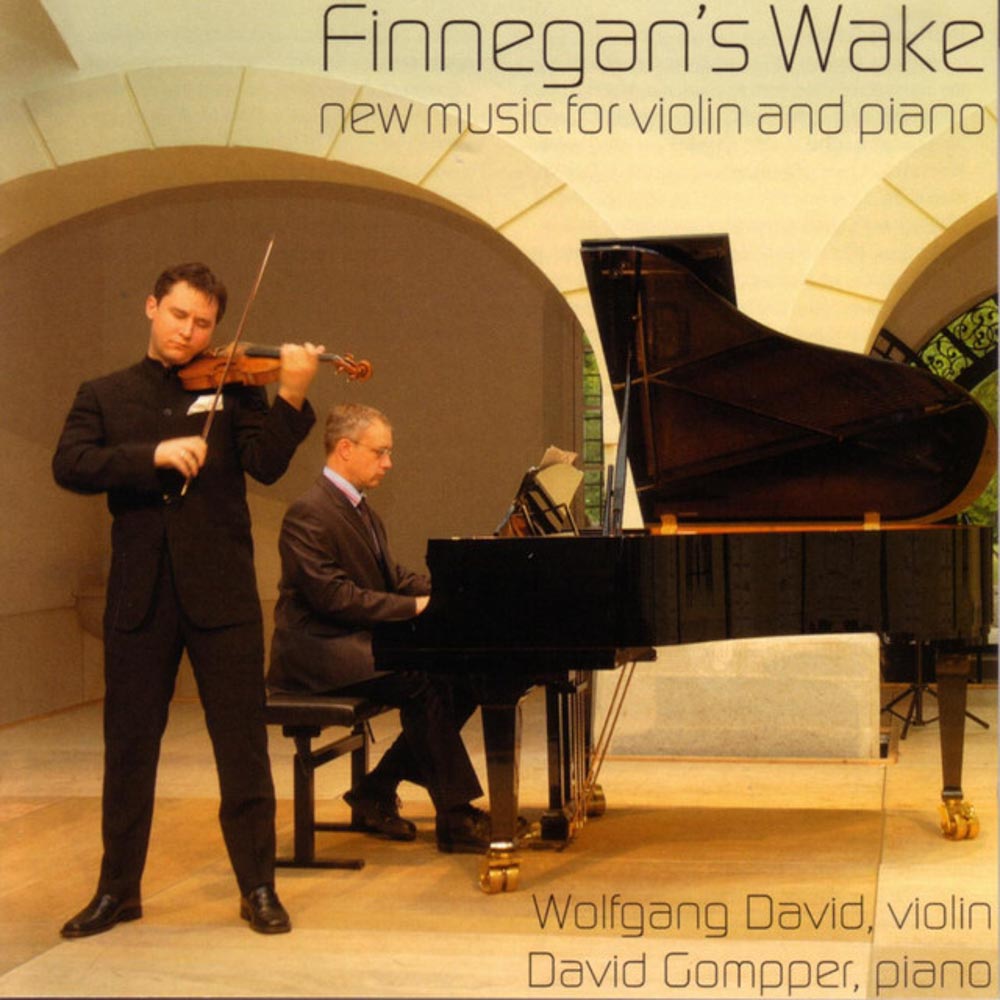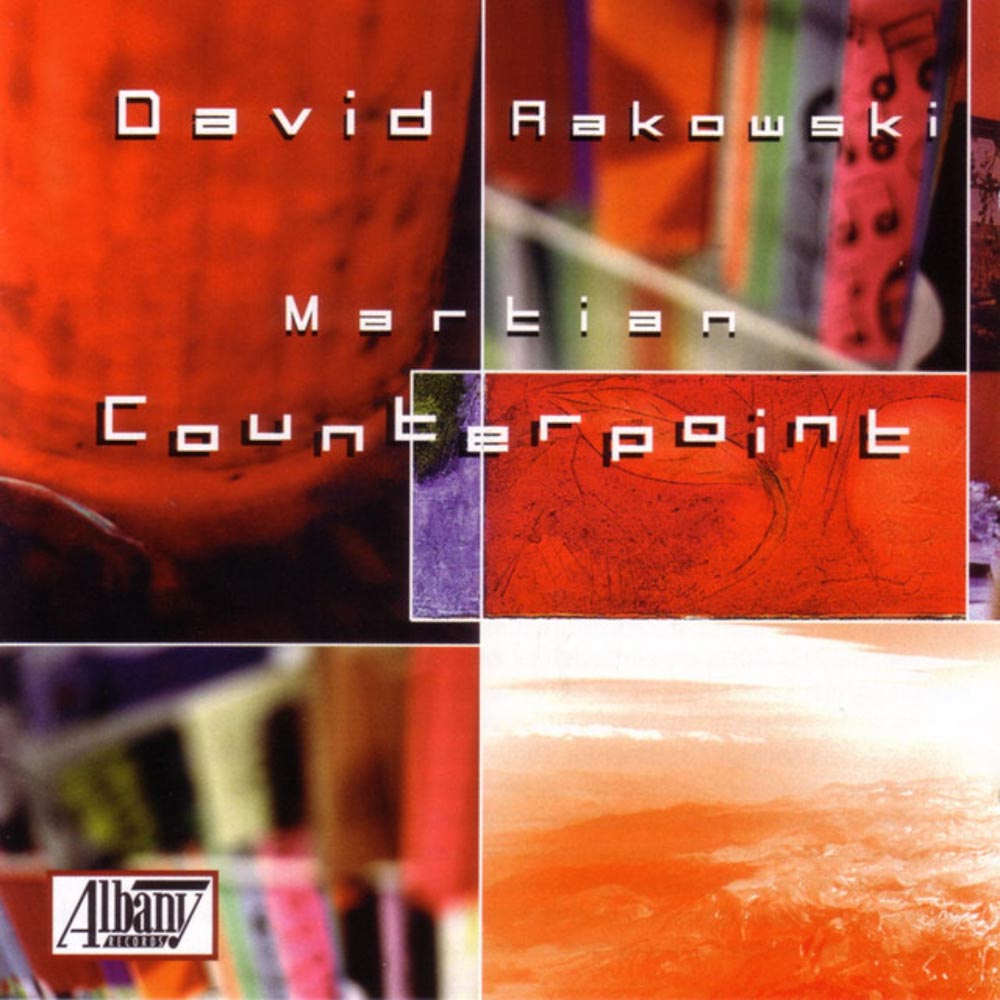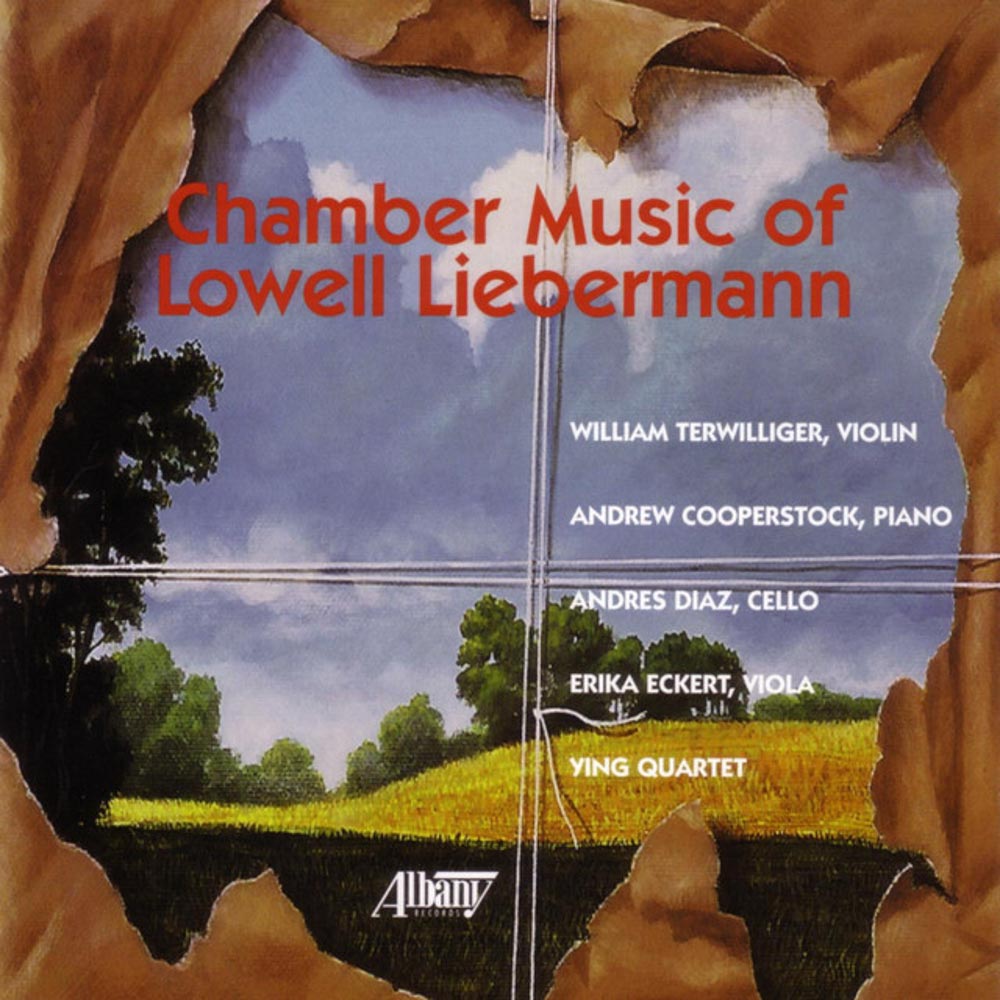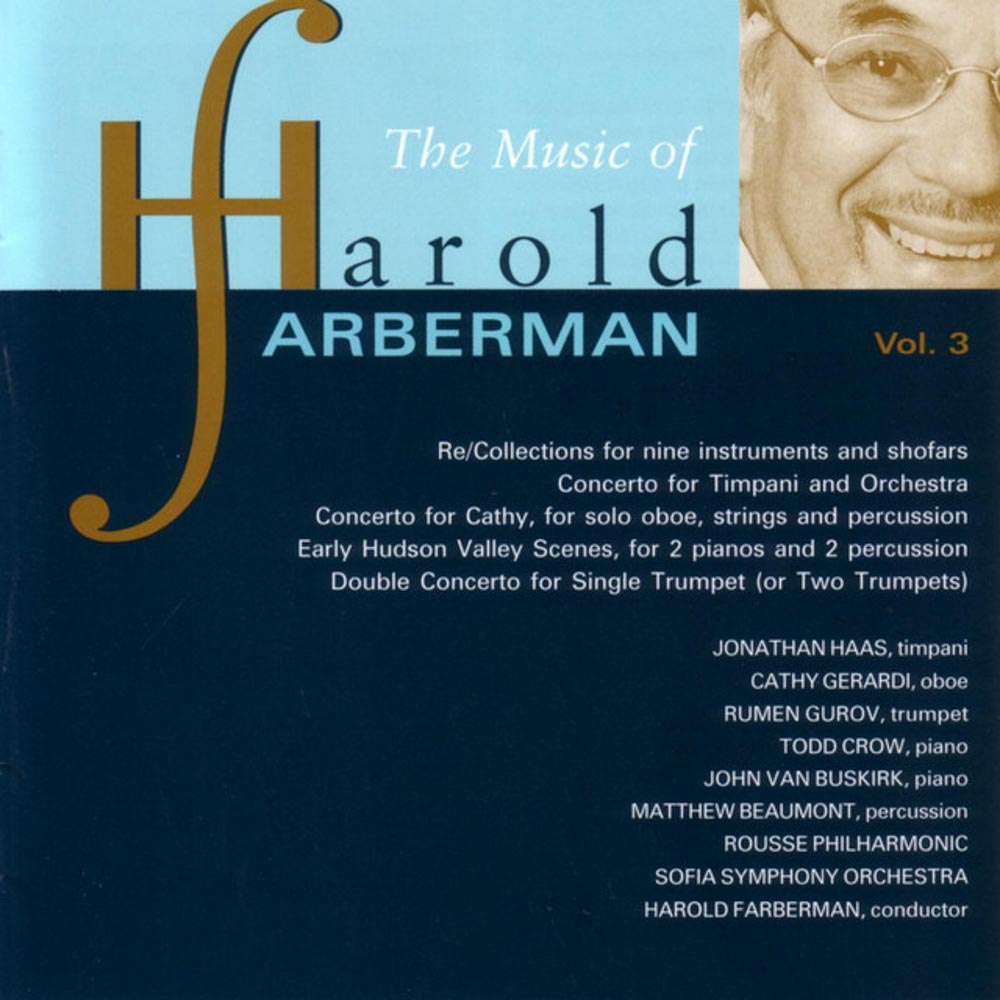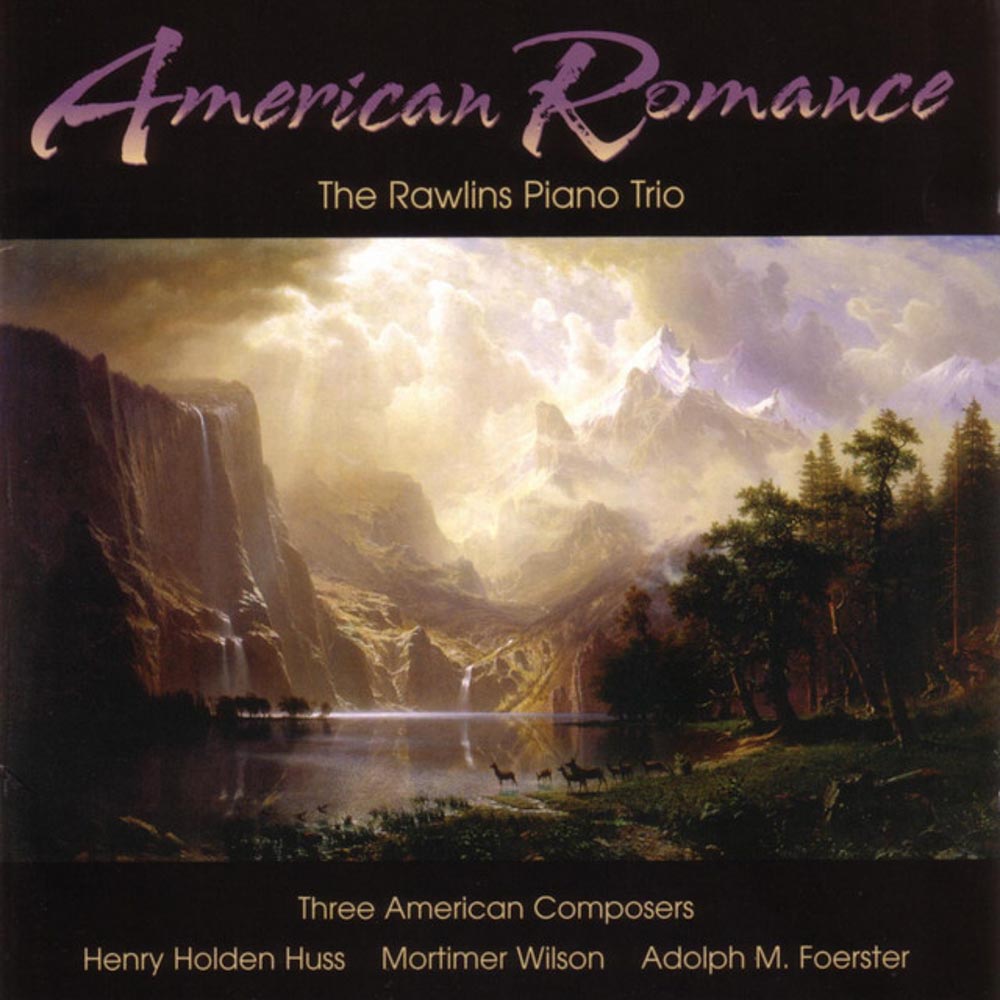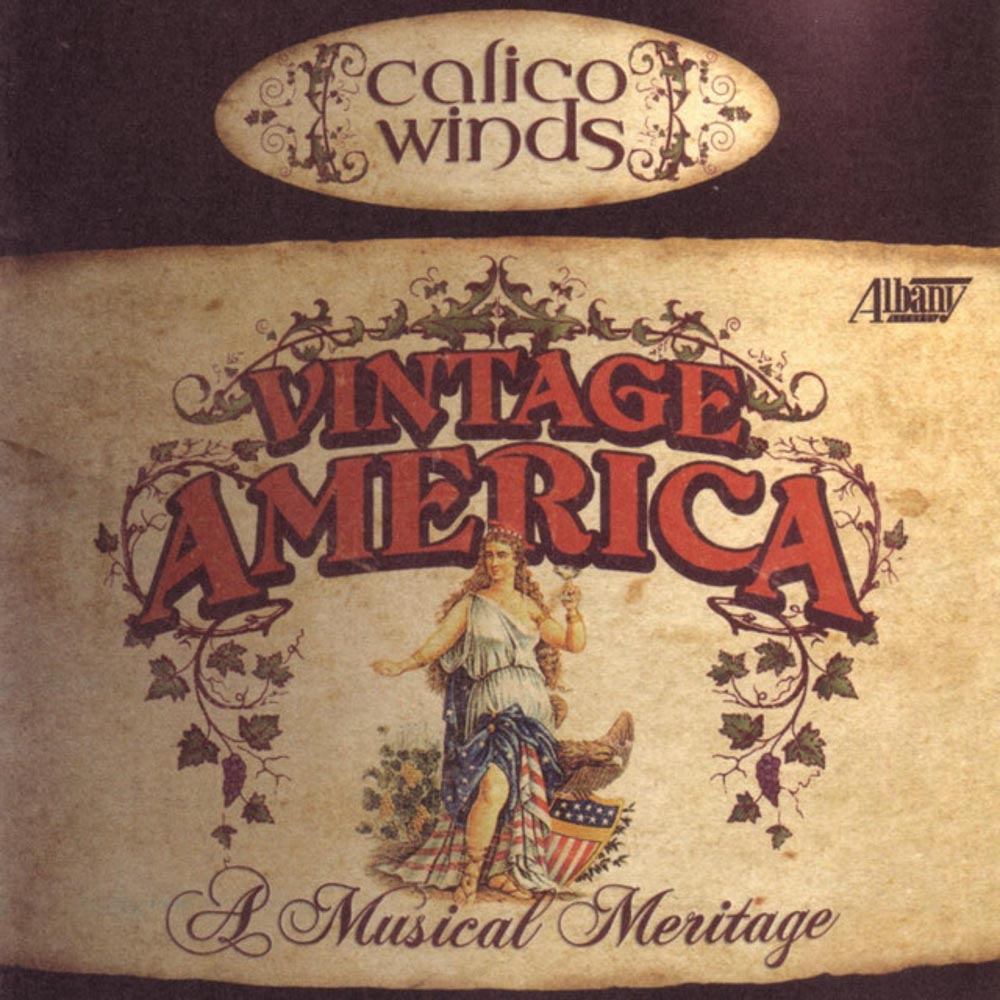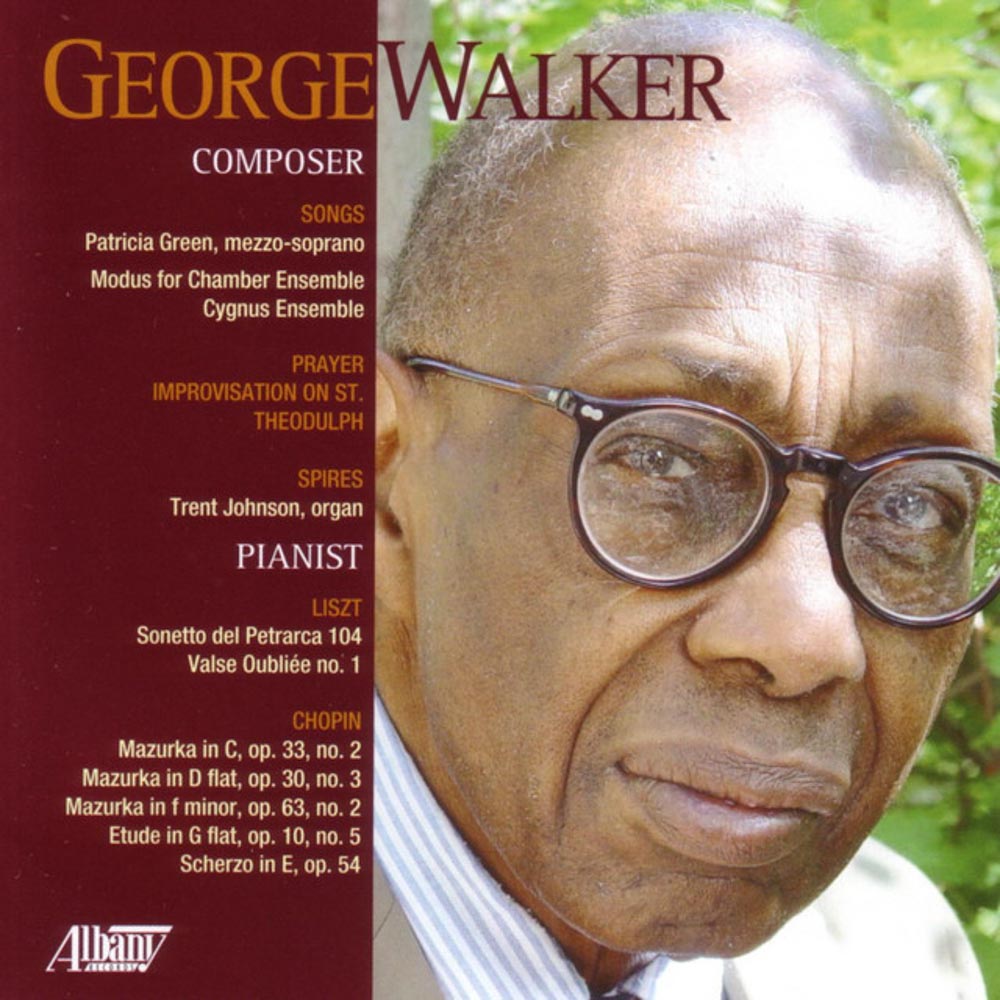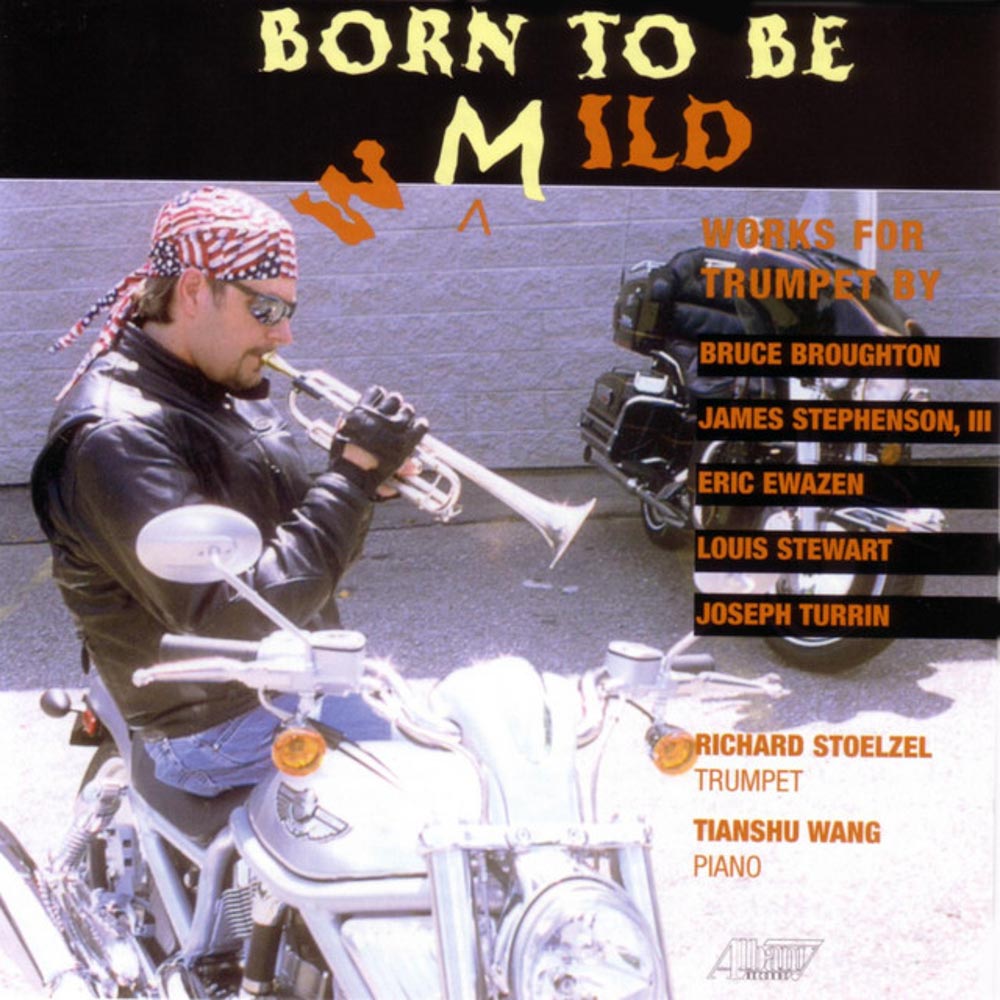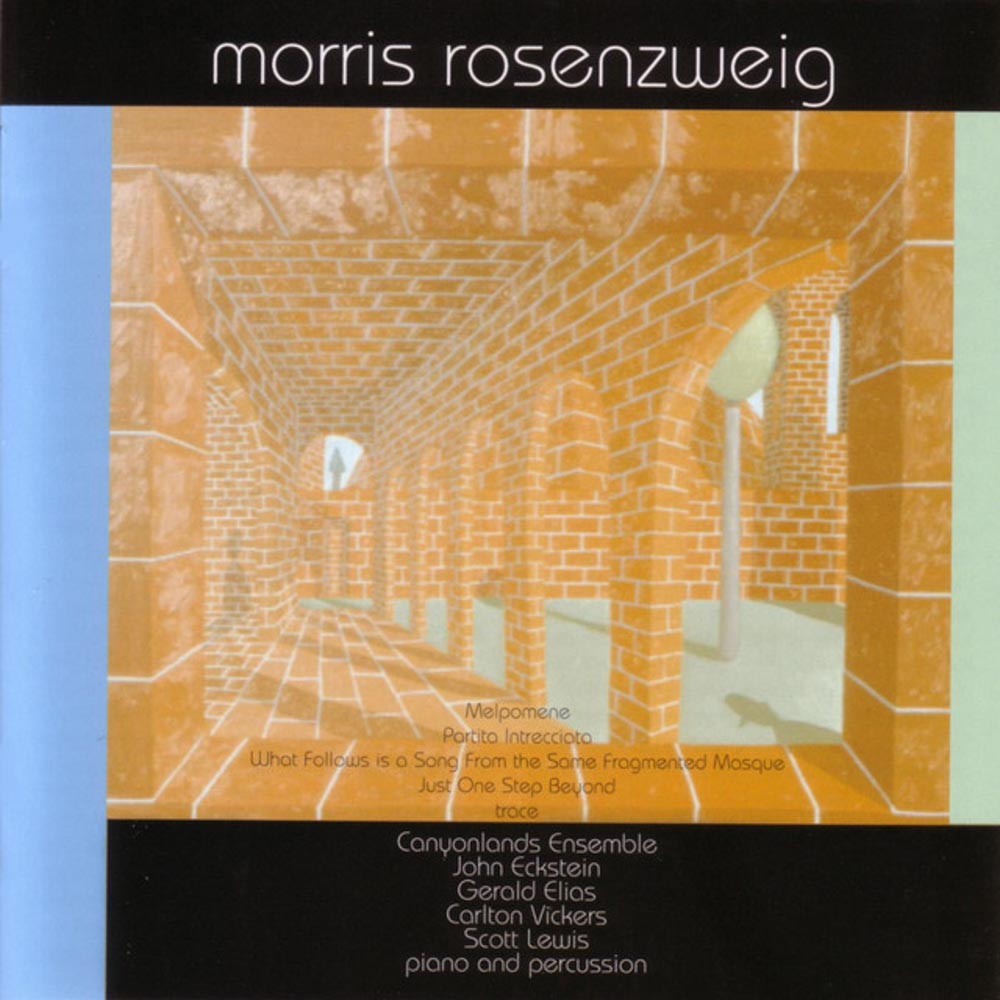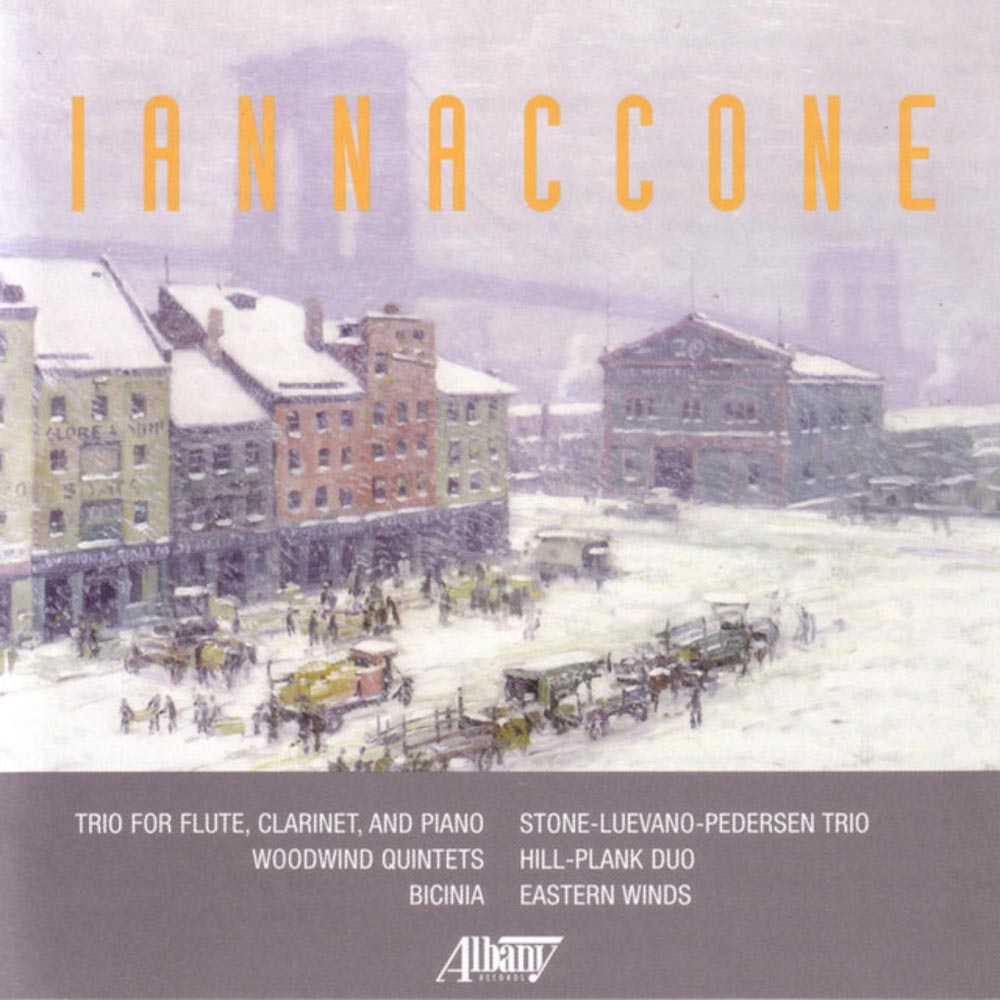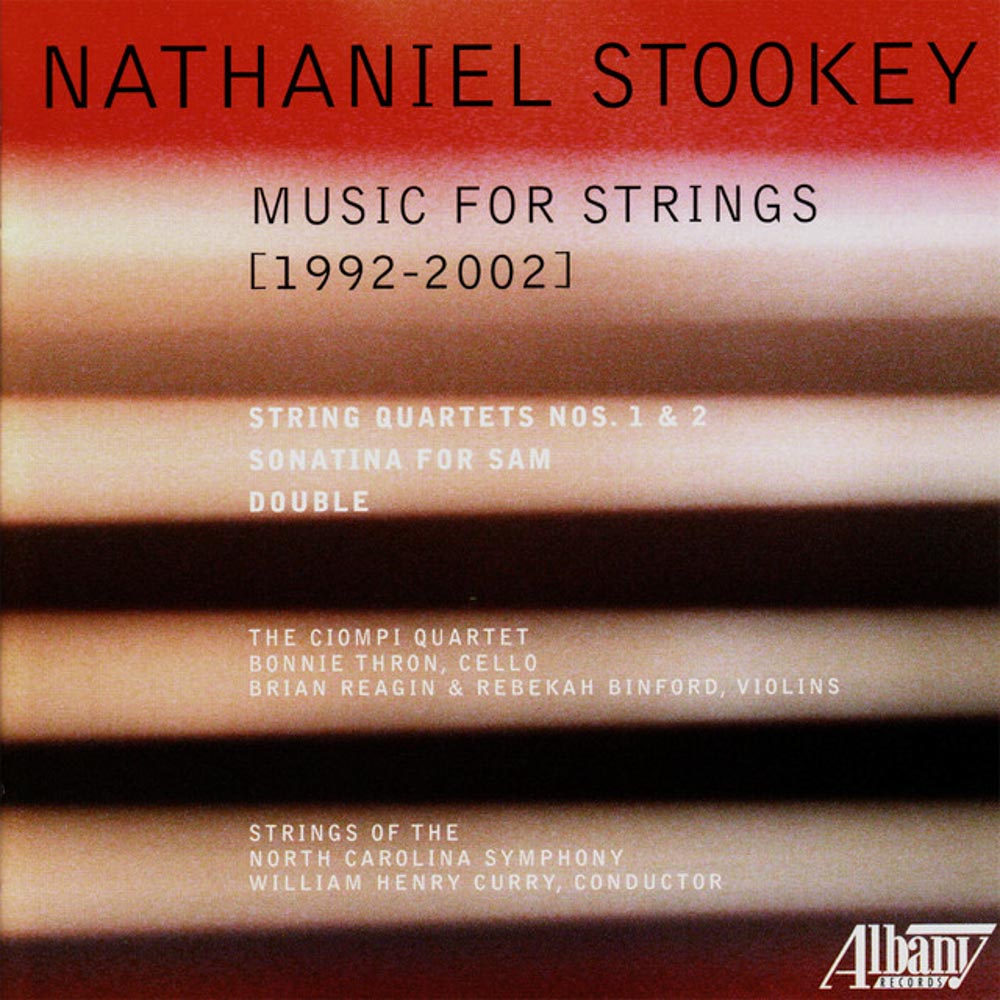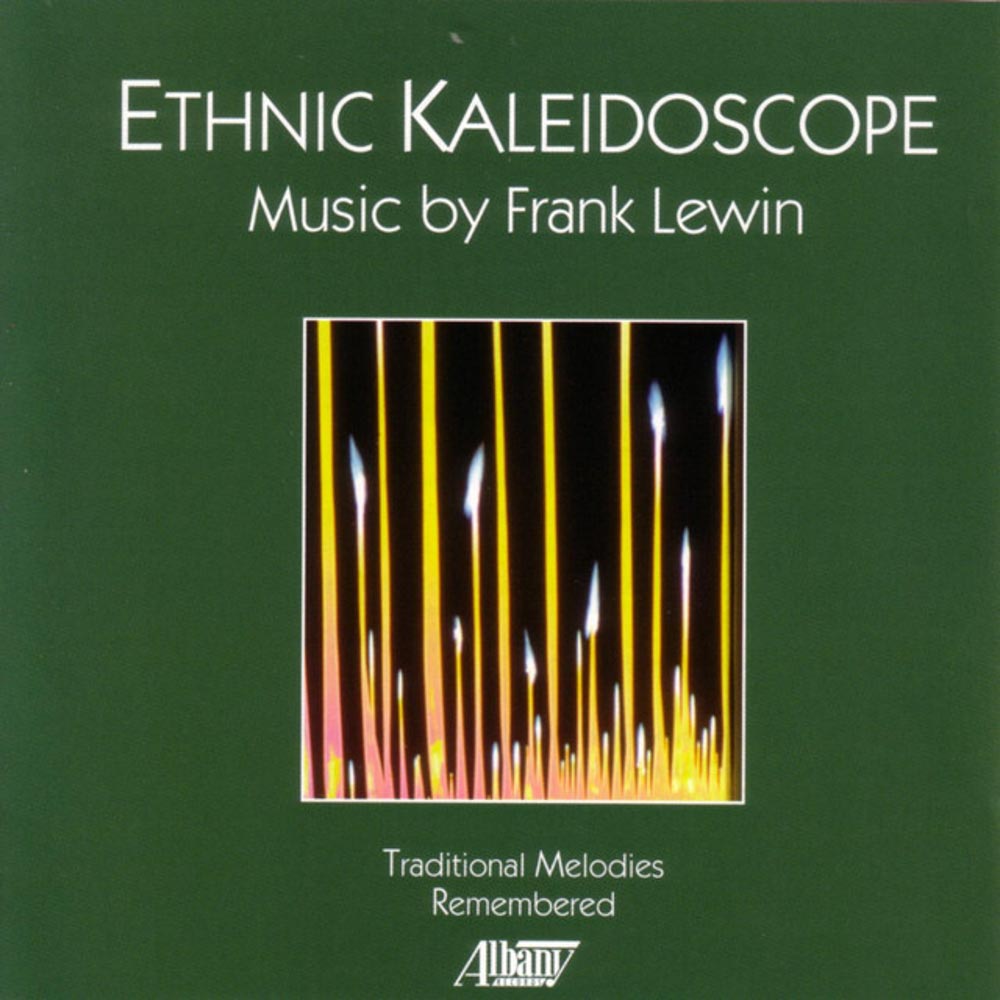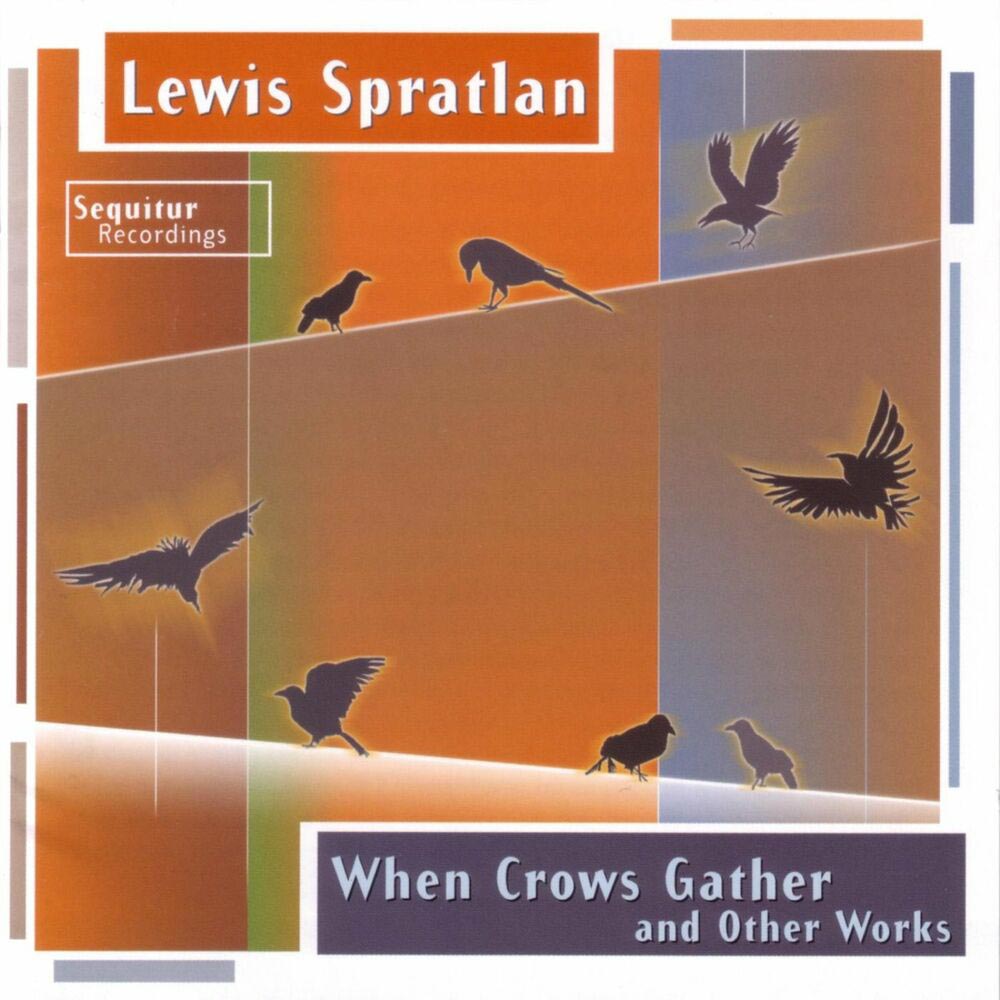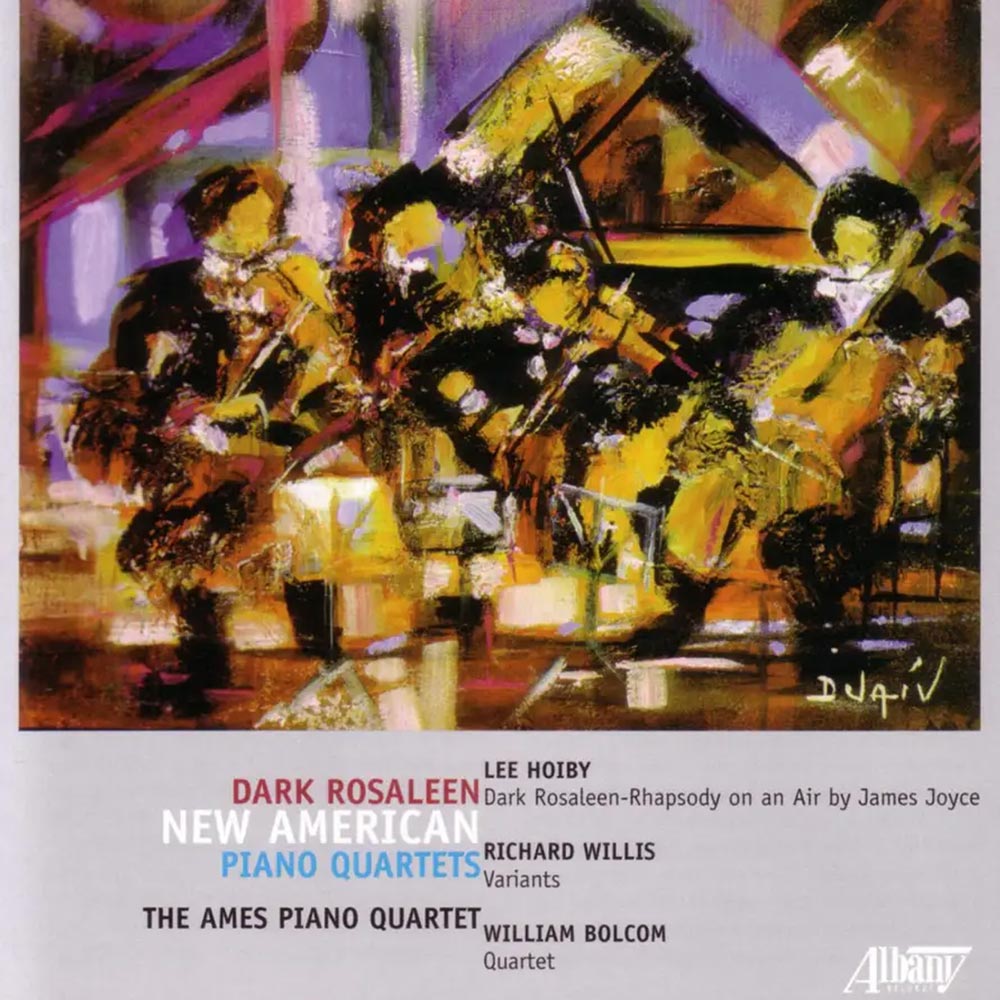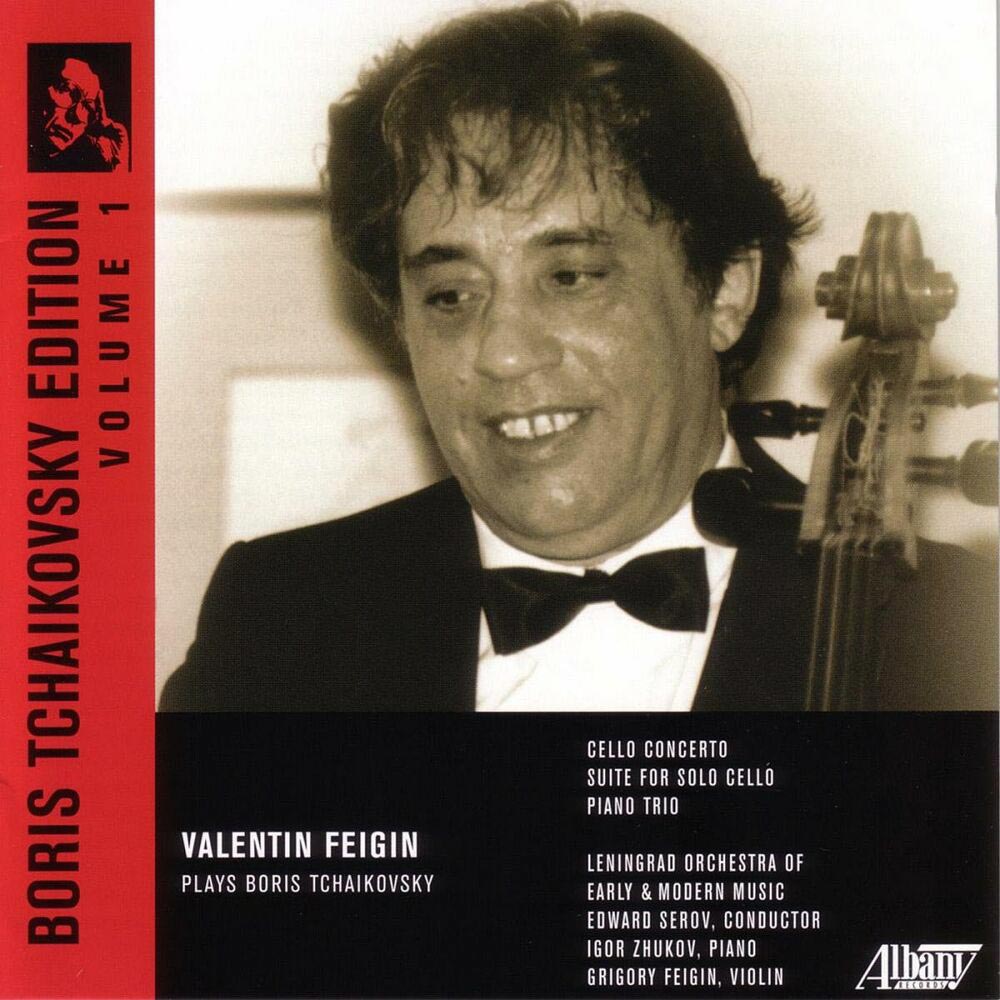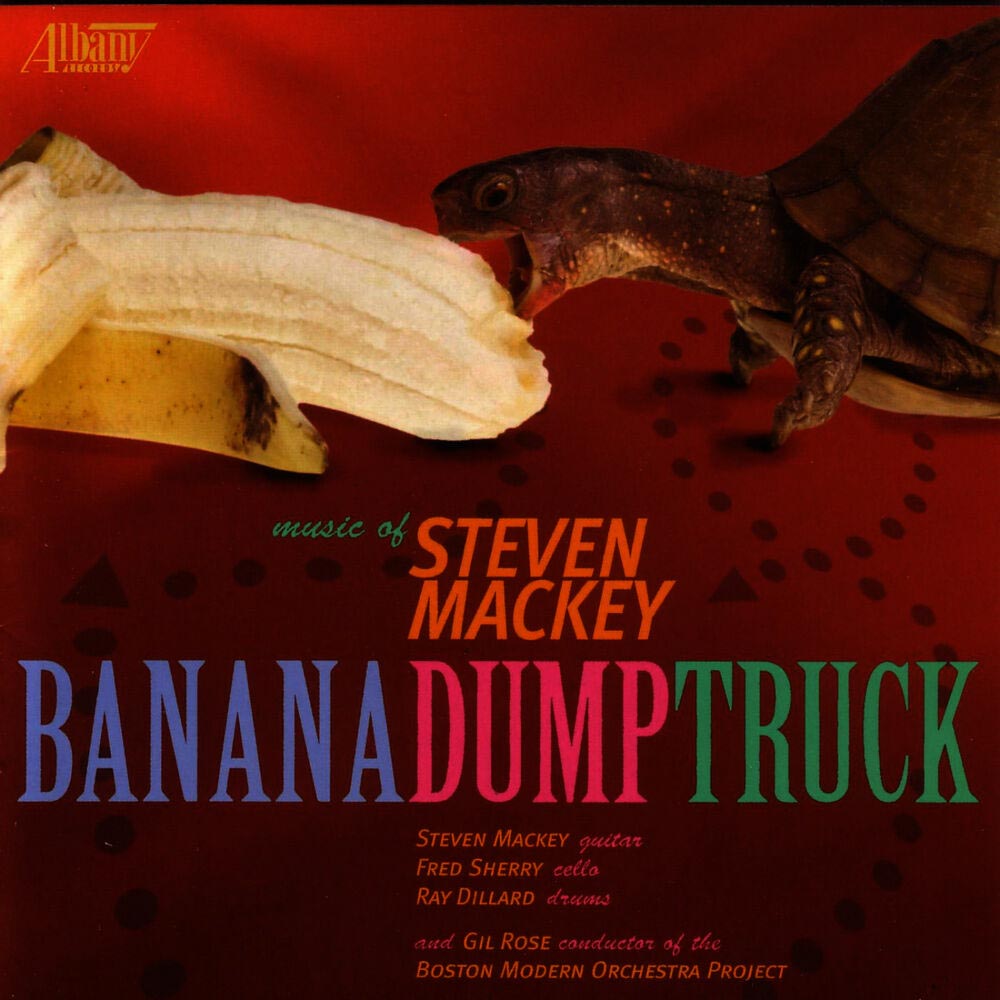Catalog #: TROY0626
Release Date: January 1, 2004ChamberComposer Barbara White was born in Boston and was educated at Harvard/Radcliffe Colleges and the University of Pittsburgh. She is currently a faculty member at Princeton University, and she spent a recent sabbatical year as a Bunting Fellow at the Radcliffe Institute for Advanced Study. She writes: "Apocryphal Studies is a sonic scrapbook of sorts, a compilation and documentation of my musical memories. Anyone who has ever been haunted by a fragment of a melody knows how enduring such memories can be; yet by the time we hear a sound, it has already begun to decay. In assembling my memories into new work, I play in the field between these apparent extremes: ever presence and impermanence. Musical reminiscences are simultaneously lasting and ephemeral, palpable and immaterial, indelible and fleeting. The marriage of persistence and elusiveness recalls other familiar paradoxes, for musical fictions are untruths we choose to believe - lies that, like an apocryphal story, contain an element of psychic, if not literal, truth. The four works on this recording embrace pre-existing music, in ways that range from veiled allusion to explicit paraphrase to willful mutilation."
Catalog #: TROY0627
Release Date: December 1, 2003ChamberElizabeth Brown grew up on an agricultural research station near Camden, Alabama. She studied piano, sang in the church choir, and played mallet percussion in the school band until she started playing flute at 16, and fell in love with it. She attended the College Conservatory of Music in Cincinnati, then moved to New York and received a Master's degree in flute performance from the Juilliard School in 1977. In her late twenties she began writing chamber pieces for her colleagues, never having formally studied composition. Since then, there have been hundreds of performances of her music worldwide. Kyle Gann in Chamber Music Magazine writes: "Elizabeth Brown writes the only music I know of in which the flute might be playing "London Bridge is Falling Down" while the cello is sliding through a long glissando underneath, yet nothing feels incongruous. There's a kind of imaginary quality to her music. It's as if not only each piece but each passage is based on some strange conceit: a bird sings while a pianist plays Mozart and a cellist shakes like a bowl full of Jell-O. Each conceit morphs into the next in a stream of non-sequiturs, and yet every juncture is smoothly blended, no seam visible. It's elegant, quiet, thoughtful, well-crafted music, and as bizarre as hell. Imagine walking into a Magritte painting: fish protrude from the vase instead of flowers, the chairs are bolted to the ceiling, but the wallpaper is lovely and the furnishings tasteful. That's a little what listening to Elizabeth Brown is like." The composer writes: "I think and dream in music, and to listen to my chamber music is to eavesdrop on an intimate, lyrical, melancholy interior world. The sound landscape is resonant, smooth, and extremely elastic - ideas can wobble or completely dissolve and slide away. Fragments of familiar tunes sometimes drift through, disappearing so quickly you're not sure if you actually heard them. While it can sound improvisatory, the music is honed over a long period of time and carefully notated. Pieces often include exotic or non-western instruments, and the playing techniques and musical styles of these other instruments influence all my writing. I use subtle microtonal gestures and inflections within a predominantly tonal language, and explore the sound world of each instrument in an unorthodox yet idiomatic way."
Catalog #: TROY0637
Release Date: April 1, 2004ChamberEzra Laderman writes: "I love writing tunes and the pull to a specific key or note. I take pleasure in perpetual variation, creating whole blocks of music derived from small motivic cells. I enjoy putting into motion a number of musical issues and making them work together in a cohesive, symbiotic manner. I find the disjunct note, silence, and space, a powerful metaphor...and most of all I thrill to a long line, an arch that weaves and spins itself out giving a sense of completeness, of wholeness. I do not want to forsake this musical world that I inhabit. The challenge is to make it work, to make the music relevant for our time, for it to be evocative and for the music to engage the heart and the mind. On a different level, there is a personal, emotional, fallible, human level that is within each of us, one that I find not easily verbalized or articulated. The language of music has enabled me to go to that source, to communicate those inner feelings. We have collectively lived through joy, tragedy, uncertainty, determination, to mention but four dimensions of life. Without furling out the banner and showing my stripes, I have been able to express myself. What I have done has given me great satisfaction. Using these disparate tools together has made it possible for me to express these feelings persuasively, consciously, or intuitively. At least, it is my hope that I have done so. It is a life spent composing my way, and trusting that it reaches and speaks to you, and it will stand the test of time...My early works are clearly grounded in tonality, spiked with dissonance. In the middle years, my music is absorbed in atonality and serial techniques. These last years my compositions have embraced all that has been meaningful to me over a lifetime of creativity. And it is very apparent in the works that make up this CD."
Catalog #: TROY0640
Release Date: January 1, 2004ChamberComposer and conductor Anthony Iannaccone studied at the Manhattan School of Music and the Eastman School of Music. His principal teachers were Vittorio Giannini, Aaron Copland and David Diamond. During the early part of his career, he supported himself as a part-time teacher at the Manhattan School of Music and as an orchestral violinist. Iannaccone's catalogue of approximately 50 published works includes three symphonies, smaller works for orchestra, several large works for chorus and orchestra, numerous chamber pieces, large works for wind ensemble, and several extended a cappella choral compositions. In 2001, his Waiting for Sunrise on the Sound was chosen as one of the five finalists in the BBC-London Symphony Masterprize competition from a field of 1151 orchestral works submitted. Anthony Iannaccone enjoys an active conducting career in both new music and standard orchestral repertory. Since 1971, he has taught at Eastern Michigan University, where he received the Distinguished Faculty Award and, for thirty years, conducted the Collegium Musicum in late eighteenth-century music for chorus and chamber orchestra.
Catalog #: TROY0641
Release Date: February 1, 2004ChamberThis is the first recording of Collin's songs and instrumental duos, including the 1933 Suite for Violoncello and Piano, a major addition to the repertoire for this combination of instruments. Born in Joliet, Illinois, Collins studied piano with Ganz in Chicago and composition with Bruch and Humperdinck in Europe. A 1912 Berlin debut and subsequent concerts in the USA and Europe earned strong critical praise. Collins was hired as an assistant conductor for the Bayreuth Festival in 1914; that engagement was ended by World War I and service in the US Army. After the War, Collins began a teaching career in Chicago, continuing to conduct, perform and compose. His music attracted the attention of Chicago Symphony Orchestra Music Director Frederick Stock, who conducted many of Collins's orchestral compositions. Those include a symphony, three piano concerti, and a secular cantata. Collins also composed dozens of songs, piano solo works and other chamber music. The songs presented on this CD were composed between 1917 and 1944. As a former opera house assistant conductor at New York's Century Opera and at the Bayreuth Festival, Collins understood voices and had a thorough appreciation for the best of them. Having coached many singers, he knew what to expect in regard to range, color, tessitura and expression. He did not, therefore, approach song writing as if composing for instrumentalists. A man who was an avid reader of the classics, he brought a literate acuity to his choice of texts and even wrote some fine ones himself; the best songs merit the attention of any sensitive singer.
Catalog #: TROY0642
Release Date: May 1, 2004ChamberSteven Stucky has written commissioned works for many of the major American orchestras, including Baltimore, Chicago, Cincinnati, Los Angeles, Minnesota, Philadelphia, St. Louis and the National Symphony. As a conductor, he appears frequently with the Los Angeles Philharmonic New Music Group and Ensemble X, a contemporary music group he co-founded in 1997. Mr. Stucky's work with the Los Angeles Philharmonic comprises the longest composer residency of any American orchestra. First appointed composer in Residence by Andre Previn in 1988, he has worked closely with Music Director Esa-Pekka Salonen since 1990. Since 1980, Mr. Stucky has taught at Cornell University, where he serves as Given Foundation Professor of Composition, and where he chaired the Music Department from 1992 to 1997. He was Visiting Professor of Composition at the Eastman School of Music in 2001-2, and Ernest Bloch Professor at the University of California, Berkeley, in 2003.
Catalog #: TROY0647
Release Date: March 1, 2004ChamberChristopher Pegis, cellist is the founder and Artistic Director of Amici Chamber Players and a cellist with the Florida String Quartet. He writes: "This recording is in many ways a product of my large extended musical family, my work with the Florida West Coast Symphony, and indeed the very nature of creative collaborations. Although it was not planned this way, the performers and composers are all linked to one another in some way by family, friendship and work. I was lucky to have met Soulima Stravinsky and his wife, Francoise, and was involved in earlier recordings and performances of his music before they both passed away. Through the Stravinskys, a link was made to his father Igor and to fellow composer Charles Jones. Although my memory of this is dim, apparently I did shake Jones' hand at a reception in New York City following my ensemble's concert to honor Soulima's chamber music compositions. Thomas Massella and Efrain Amaya are former college classmates of myself and my wife, respectively; Paul Ramsier came to us via the Florida West Coast Symphony and his collaborations with Symphony bassist John Miller. When we started to physically record this music, we jointly decided to try to avoid cutting and splicing at all costs. Our aim was to impart the excitement and sweep of a live performance to our audience. This put extra pressure on all of the performers, but the result is that what you are hearing is 98% splice free from beginning to end. In fact, nine of the eleven compositions are complete takes from start to finish."
Catalog #: TROY0649
Release Date: May 1, 2004ChamberStephen Scott writes: "Sounding Landscapes is a kind of song-cycle fantasy celebrating various landscapes, both physical and imagined, both natural and cultural, of Lanzarote, eastern-most of the Canary Islands. I was inspired to make this work not only as a personal manifestation of my affection for Lanzarote, which I have visited three times, but also in response to two other sources: the evocative visual art of painter/photographer Ildefonso Aguilar, Founder and Director of the Visual Music festival of Lanzarote, whose recent series of paintings, Paisajes Audibles, provides my title and the cover paintings; and works by various writers, including Plato, Lorca and Agustin Espinosa, who have examined ideas of landscape and the humans who are shaped by it and shape it in turn. My work for the past 25 years has centered on the bowed piano, a medium primarily of my own devising but influenced also by the discoveries of other experimentalists such as Henry Cowell, John Cage and Curtis Curtis-Smith. Most of the sounds are made directly on the strings of one open grand piano by ten players using a variety of materials and tools; among these are nylon fish line, horsehair, guitar picks and fingernails, piano hammers, percussion mallets and specially-designed piano mutes. The music also owes a huge stylistic debt to the thinking of Terry Riley and Steve Reich, as well as to various world musics, especially West African music, jazz and flamenco. Paisajes Audibles/Sounding Landscapes is my first major work to integrate the human voice with the Bowed Piano Ensemble. The texts sung and spoken by the soprano (and occasionally by the players) are in English, Spanish and French and most are self-explanatory. The work was composed on commission from Meet the Composer Commissioning Music USA, for San Francisco's Other Minds Festival. It is dedicated to the Festival's director, Charles Amirkhanian, and to Ildefonso Aguilar, two of contemporary music's most visionary presenters; Aguilar's work has given life to Harry Partch's dictum that "the eye explains to the ear and the ear fulfills the vision"; and Amirkhanian has for decades been teaching Americans, musicians and listeners alike, much of what we need to know about our own contemporary music and about each other."
Catalog #: TROY0651
Release Date: April 1, 2004ChamberBorn in Buenos Aires, Jorge Liderman began his musical studies at the Rubin Academy of Music in Jerusalem. In 1988, he received his doctorate in composition from the University of Chicago where he worked with Ralph Shapey and Shulamit Ran. A year later, Liderman joined the composition faculty at the University of California, Berkeley. The composer writes: "Continuity and the lack of continuity have been at the center of my musical thinking for nearly fifteen years. By continuity I mean the presence of a musical fabric woven by one or more musical processes that unfold gradually. This leads the listener, "uninterruptedly," from one harmonic idea to another, from a low to a high register for example, or from a clearly irregular and non-metric rhythmic pattern to a regular and pulsating beat. On the other hand, the lack of continuity shapes itself through the abrupt juxtaposition of sharply contrasting brief musical statements. Here the contrast is created by the juxtaposition of far reaching harmonic areas which could also be different in nature. Trompetas de Plata, a collection of some of my most recent chamber works for strings, percussion and piano, was composed with these ideas in mind."
Catalog #: TROY0652
Release Date: July 1, 2004ChamberFounded in 1989, the Nevelson Duo, named for the American artist Louise Nevelson, is committed to performing works by American composers, as well as both standard and less-familiar repertoire for violin and piano. Elizabeth Reed Smith is Professor of violin, viola, and chamber music at Marshall University. Since earning degrees in violin performance from Yale and Eastman, Dr. Smith has received numerous awards. She has studied violin with Charles Castleman, Szymon Goldberg and Burton Kaplan. She has spent five summers as concertmaster of the Spoleto Festival Orchestra. With degrees from the University of Colorado at Boulder and the University of Missouri at Kansas City, Leslie Petteys is Professor of piano and graduate studies at Marshall University. She has also taught at Stephens College and served as Assistant Director of the Institute for Studies in American Music at University of Kansas City - Missouri. She has studied piano with David Burge and performed in master classes for Gilbert Kalish, Byron Janis, and Elly Ameling. She has appeared as a solo recitalist and chamber musician throughout the eastern and Midwestern states. The Nevelson Duo has performed extensively in the Mid-Atlantic states and has been featured in recitals at the National Museum of Women in the Arts in Washington, D.C. and the Longy School of Music in Boston. Bidder to Better was commissioned by the Nevelson Duo as part of the national series of works sponsored by Meet The Composer/Arts Endowment Commissioning Music/USA.
Catalog #: TROY0663
Release Date: June 1, 2004ChamberRichard Felciano's interest in musical acoustics led him through language, voice and organ studies to electronic and then computer, as well as to music for architectural and public spaces and music for non-Western instruments. Many of these works demonstrate a strongly ritualistic bent, reflective of the large Portuguese and Asian populations of his Northern California childhood. In the words of his colleague and fellow composer, Howard Hersh, "the vitality of invention and depth of artistic curiosity are clearly enormous, (yet) the major thrust of his contribution...lies in the power with which he has fused his innovative techniques to that timeless element of dramatic immediacy and his acutely-tuned sensibility to the sheer beauty of sound. There has never been any doubt that behind his music - whatever its external form - there stands a human - a humane - sensibility". The composer himself writes: "It has been said that artists spend much of their lives following a path which they somehow know is right but cannot yet clearly define. Scientists know a similar situation: Einstein spoke of 'something which is there but we don't know what it is.' In both instances, knowing that 'something' becomes compelling. In the notes about the works which are on this CD, my own search for that 'something' will become clear - a desire to approach composition through a deepening knowledge of 'what is there' in music - the physical nature of sound itself, so that, as in architecture, whatever structure is possible is defined by the nature of the materials. Picasso observed that the real problem in creativity is the materials, meaning that only through knowledge of them can anything at all be expressed. He was right."
Catalog #: TROY0667
Release Date: July 1, 2004ChamberMajor critics have praised Erica Muhl's music, describing it as "strong and poetic," "ravishingly beautiful," "haunting," even "fearless". Paul Hertelendy, one of America's most esteemed writers on music, wrote, "Muhl has a fine ear and an iridescent palette...[Her work] is a contemporary foray into impressionism, mysticism, veiled allure and the shimmering colors of a concert orchestra". She was born and raised in Los Angeles, where her father, Edward, was head of production for Universal Pictures and her mother, Barbara, an author and opera singer. Her parents associated with such musical figures as Stravinsky, Schnabel, Stokowski, Andre Previn and Henry Mancini. As may have been expected in this musical milieu, Muhl was trained both as a composer and conductor, with much of that training completed in Europe. At age sixteen she was invited to study with Nadia Boulanger in Paris. After returning to California to earn her B.M., she traveled again to Europe for graduate studies at the Accademia di Santa Cecilia in Rome and the Accademia Chigiana in Siena, studying with the great Italian composer Franco Donatoni. In 1991, she completed her Doctorate of Musical Arts at the University of Southern California. She studied conducting with Walter Cataldi-Tassoni, a student of Mascagni and Fritz Zweig, a student of Humperdinck and a close colleague of Richard Strauss and Otto Klemperer. Muhl has served as Assistant Conductor for Los Angeles Opera Theater, Seattle Opera and the Pacific Northwest Wagner Festival's complete Ring. Erica Muhl is Professor of Composition at the University of Southern California's Thornton School of Music and resides in Los Angeles.
Catalog #: TROY0680
Release Date: September 1, 2004ChamberWolfgang David (b.1971) has become ensconced on the international stage, both as a recitalist, and as a guest soloist with many of the world's leading orchestras. His teachers included Rainer Kuelchl, the concert master of the Vienna Philharmonic Orchestra, Igor Ozim at the Berne Conservatory and Yfrah Neaman at London's Guildhall School of Music. David Gompper (b.1954) has lived and worked professionally as a pianist, a conductor, and a composer in New York, San Diego, London, Nigeria, Michigan and Texas. He is currently Professor of Composition and Director of the Center for New Music at the University of Iowa. In 2002-2003, he was in Russia as a Fulbright Scholar, teaching, performing and conducting at the Moscow Conservatory. He has performed with Wolfgang David in Moscow, the United States and Vienna.
Catalog #: TROY0681
Release Date: August 1, 2004ChamberDavid Rakowski grew up in St. Albans, Vermont playing trombone in community bands and keyboards in a rock band. His first composition was a band piece he wrote his junior year in high school, in order to win the Vermont All-State Composition Competition (he lost). The first music he heard that he really liked was Le Soleil des Eaux of Boulez and Ensembles for Synthesizer of Babbitt, on a Time-Life "Music of Today" compilation that his band director had lent him. He eventually studied composition at the New England Conservatory, at Princeton with among others, Milton Babbitt, and at Tanglewood with Luciano Berio. He has been composer-in-residence at the Bowdoin Summer Music Festival and Guest Composer at the Wellesley Composers Conference. He has taught at Stanford, Harvard, and Columbia Universities. Currently he is Professor of Composition at Brandeis, whose faculty he joined in 1995.
Catalog #: TROY0683
Release Date: August 1, 2004ChamberAllen Shawn has composed a large catalog of chamber and piano music, 11 concertos and orchestral works, choral music, and several song cycles. He has composed incidental music for theater, two chamber operas to libretti by his brother, playwright Wallace Shawn, a one act children's chamber opera, music for ballet, and music for the film "My Dinner with Andre." He performs frequently as a pianist and has been a faculty member since 1985 at Bennington College in Bennington, Vermont. He is also the author of the book, Arnold Schoenberg's Journey, as well as many articles about contemporary music.
Catalog #: TROY0684
Release Date: September 1, 2004ChamberPeter G. Davis writes: "Spanning the years 1978 to 2001, the music on this disc gives a useful overview of the musical aims and stylistic development of a prominent, productive, and often provocative American composer between the ages of 17 and 40. It is a useful mini-survey and a revealing one as well. All five works are written for small instrumental combinations, an exposed medium in which no composer has ever found an easy place to hide. In chamber music every note counts, and the composer must make the performer as well as the listener feel actively engaged with the music's substance and forward progress at all times, if the piece is to emerge as a fully satisfying listening experience. Anyone who listens closely to Lowell Liebermann's scores has to be impressed by their ability to do precisely this in music notable for its clarity and textural lucidity. Some will be tempted to call these works neo-romantic, neo-classical, post-modern, or any number of other fashionable terms, most of them not very helpful. Labels are often misleading, but one thing is certain; Liebermann is not concerned with startling his audiences by experimenting with radical new structures, never-before-heard musical sounds, or extended instrumental techniques. Indeed, he adopts a more conservative stance that apparently stings certain critics for whom novelty is absolutely essential if a new work is to be considered artistically valid. So much the worse for them. Liebermann is too busy composing to enter into such aesthetic arguments. The title of each piece on this disc honestly describes what it is, and in terms that composers as far back as Haydn and Mozart would recognize. Liebermann's music falls gratefully upon the ear, but it is filtered through the sensibility of a composer who clearly lives in our time and is fully aware of the tumultuous musical upheavals of the past century, even as he consciously makes the choice to offer us something that rises above the fray. Liebermann writes music that above all strives for balance and beauty - and braininess as well, for all those who care to dig beneath the surface. It is a healthy sign of the times that a composer can once again choose to be accessible in this way and not be automatically squashed and discouraged by the mandarins of contemporary music. Such was the fate of many American composers active in the generation that preceded Liebermann, and the new music scene is still in recovery from those bad old days."
Catalog #: TROY0688
Release Date: November 1, 2004ChamberHarold Farberman's career as a conductor has overshadowed his achievements as a composer. In fact, while a member of the Boston Symphony Orchestra, Farberman turned first to composition as a further creative outlet, which in turn led to his more visible conducting career. From the mid-fifties onward, when he composed his first work, Evolution, for soprano, French horn and seven percussionists, Farberman has never stopped creating music. Harold Farberman was born on November 2, 1929 on New York City's Lower East Side. Coming from a family of musicians (his father was the drummer in a famous 1920s Klezmer band led by Schleomke Beckerman; his brother was also a drummer) it seemed inevitable that he pursue music as a career. After graduating from the Juilliard School of Music on a full scholarship in 1951, he immediately joined the Boston Symphony Orchestra percussion section and became the youngest member of the orchestra at that time. Incidentally, Farberman has the distinction of being the only Juilliard instrumental graduate who has been invited back as a conductor of its various orchestras and as a composer - he was commissioned to write an opera for the opening of The Juilliard Opera Theater (The Losers). With a performer's knowledge of percussion instruments and a dissatisfaction with their conventional treatment, Farberman became an early advocate for the use of percussion sonorities as a major voice in compositional structures. His very first work, Evolution, written in 1954, before he began formal studies in composition, is scored for over one hundred percussion instruments and has been recorded four times, once by Leopold Stokowski. After hearing Evolution, Aaron Copland invited Farberman to study with him at Tanglewood in 1955. That short involvement with Copland strengthened Farberman's resolve to acquire more compositional skills, and during his twelve year tenure with the BSO, he earned a Masters Degree in composition from the New England Conservatory.
Catalog #: TROY0692
Release Date: August 1, 2004ChamberHenry Holden Huss was born in Newark, New Jersey, and grew up in New York City, where his family moved when he was two. His father had emigrated from Germany and became a successful organist and piano teacher in this country. Young Huss began to study music with his father, then others in this country, finally traveling to Munich to study at the Royal Conservatory. He studied piano, organ and composition with two other American students who began the same time he did: Horatio Parker and Arthur Whiting. All three excelled. Upon his return to the United States, Huss received some recognition with his Piano Concerto (his graduation piece from Munich). He performed it both with the Boston Symphony and the New York Philharmonic. Daniel Gregory Mason related to Huss in 1892, that John Knowles Paine, the dean of American composers with whom Mason was studying at the time, considered Huss "the best of the young generation of American composers". Many shared this opinion. But like many other American composers of the time, Huss found it very difficult to get his music performed and published. His Trio in d minor, Op. 23, was composed in 1886 and dedicated to his teacher Joseph Rheinberger. Mortimer Wilson was born in Charlton, Iowa. He studied organ, violin and composition with Frederick Grant Gleason at the Chicago Musical College. He then studied in Leipzig with Max Reger. John Tasker Howard (the great observer of early American composers) wrote of his rigorously trained former teacher that he "...could toss complicated counterpoint from his pen as easily as he could talk to his friends". Upon his return to this country in 1911, he taught at the Atlanta Conservatory and conducted the Atlanta Philharmonic Orchestra. In 1916, he moved to Brenau College in Gainesville, Georgia. By 1918, he had taken a job as consulting editor for the National Academy of Music in New York City, where he remained until his death. Today, his works are mostly in manuscript and includes five symphonies and a great deal of chamber music. The suite, From My Youth, Op. 5 was published in 1911 and premiered by the Sitting Trio. Adolf Martin Foerster was born in Pittsburgh. He began with piano lessons from his mother and then pursued music in the public schools which had just incorporated Lowell Mason's ideas about music education into its public schools. He also then went to Leipzig to complete his education. Upon his return to America he spent one year teaching in Ft. Wayne, Indiana, before he returned to Pittsburgh, where he soon became one of the musical leaders of the community. Though mainly known as a songwriter, Foerster's many compositions include numerous suites, overtures, and festival marches for orchestra; a violin concerto, two other piano trios; a piano quartet and pieces for violin and piano. His Trio Serenade was composed in 1907 and is a lush romantic work.
Catalog #: TROY0693
Release Date: August 1, 2004ChamberAmerica began forging its own cultural identity in the 19th Century with music reflecting a vast array of cultures coming together. By the time the first music conservatory opened in 1865, European classical music had begun to be mingled with music influenced by Native American themes, African-American styles of ragtime and spirituals, Latin American and rural American folk music, and the traditional military band. With Vintage America, Calico Winds showcases these American musical roots. Known for exploring the full palette of tone colors available to the wind quintet, Calico Winds plays "in perfect balance with each other, each [member] contributing lovely tone quality and flawless intonation..." (The Times Herald, Olean, NY) It is with these attributes that Calico Winds brings to life America's rich musical legacy.
Catalog #: TROY0697
Release Date: February 1, 2005ChamberThe songs for voice and piano by George Walker are among the finest written by an American composer and are "as outstanding as they are varied" according to Fanfare Magazine. Modus for Chamber Ensemble was commissioned by the Cygnus Ensemble. It received its premiere in New York in March, 2001. The four movements are characterized by recurring motives and highly rhythmical sections of great intensity. The title, Modus, refers to the elegant techniques used to transform and unify the movements. The Prayer for Organ was composed in 1996, 50 years after Walker's famous Lyric for Strings, a memorial to his grandmother, was written. The similarity between these two works lies in the use of contrapuntal techniques. The Improvisation on St. Theodulph is a fantasia on the melody stated before the work begins. The Prayer and the Improvisation were commissioned by the regional chapter of the American Guild of Organists in Washington, D.C. Spires was commissioned for performance by Dr. Mickey Thomas Terry at the Convention in Denver of the National Chapter of the American Guild of Organists in 1998.
Catalog #: TROY0698
Release Date: November 1, 2004ChamberJeffrey Mumford was born in Washington, D.C. and has been conspicuously active in that city's musical life. His music has been performed throughout the United States and abroad and the present CD was preceded by one on the CRI label, similarly devoted to his chamber music. Honors, awards, fellowships and commissions have come to him from many prestigious sources. Following a year as composer-in-residence at Bowling Green State University's College of Musical Arts, Mumford joined the faculty of the Oberlin College Conservatory of Music in the fall of 2000. Two of Mumford's orchestral works - the celebratory fanfare Within a cloudburst of echoing brightness (1995) and Amid the light of quickening memory (2003) were commissioned and introduced by the National Symphony Orchestra under Leonard Slatkin. These titles are characteristic for Mumford. He has shunned traditional sonatas and symphonies in favor of music that tends to define its own shape and substance, and his titles allude to the impressions or moods behind the creative impulse. References to light, radiance and resonance are as abundant in his titles as references to angels in the works of Einojuhani Rautavaara and Augusta Read Thomas. Mumford has stated that his music in general is "inspired by cloud imagery, light and the unique aspects of the energy that characterize the various times of day." While his works are generated from such impressions, they are not tone poems in the conventional sense of "painting pictures" or delineating action, and listeners would be well advised to avoid seeking or expecting specific images in them.
Catalog #: TROY0699
Release Date: October 1, 2004ChamberAlice Shields writes: "I received a doctor of Musical Arts in composition from Columbia University, studying with Vladimir Ussachevsky and Jack Beeson. I have gratefully absorbed grants from, among others the National Endowment for the Arts, the National Opera Institute and the New York Foundation for the Arts, and have done my time as Associate Director of the Columbia-Princeton Electronic Music Center and Associate Director for Development of the Columbia University Computer Music Center. I've performed South Indian rhythmic recitation in Bharata, Natyam dance-dramas with Indian dancer Swati Bhise and her troupe of dancers and Indian musicians, at venues including Wesleyan University, Juilliard School and the Asia Society. In a former life I also sang operatic roles with the New York City Opera, the Opera Society of Washington, D.C. and the Clarion Opera Society in Italy, among others. I composed Vegetable Karma in Fall, 1999, while artist in residence at the Computer Music Center of the Conservatory of Music at Brooklyn College. Veggie Karma, as I tend to call it, was the piece I created using ProTools. In creating the piece I used sound sources from hip-hop sample albums, and molded them into pitches of Todi raga, which is from North Indian classical tradition. The work was premiered at the International Electroacoustic Music Festival at Brooklyn College, November 7, 1999. Dust was commissioned by choreographer Mark Taylor of Dance Alloy of Pittsburgh, in collaboration with choreographer Anita Ratnam of the Arangham Dance Theater of Madras, India. Shenandoah is the second of three computer pieces I wrote for choreographer Mark Taylor. It was commissioned by the School of Theater and Dance of James Madison University. I created Shenandoah in the immediate aftermath of the terrorist attacks on the World Trade Center. Within days of 9/11, I had to take an eerily empty train from New York City to Washington, D.C. and then a bus to Virginia in order to participate in the first artist residency of this project. It seems almost inevitable then, that Shenandoah came to be about non-violence and peacefulness. The premiere performances took place March 21-23, 2002, at James Madison University in Harrisonburg, Virginia."
Catalog #: TROY0700
Release Date: October 1, 2004ChamberEric Ewazen has written: "Richard Stoelzel is one of the great trumpet players of our time. His majestic tone, beautiful lyricism and heartfelt musicality is a joy to hear." Richard is equally at home as a soloist, chamber musician and orchestral musician. He began his career as solo cornet with the United States Coast Guard Band. As a soloist, he has toured China extensively. He has been principal trumpet of the New Orleans Symphony and is currently principal trumpet of the Palm Beach Opera Orchestra as well as a member of the Des Moines Metro Opera Association. He is professor of trumpet and head of the brass program at Grand Valley State University.
Catalog #: TROY0701-02
Release Date: October 1, 2004ChamberDan Locklair, a native of Charlotte, North Carolina, holds a Master of Sacred Music degree from the School of Sacred Music of Union Theological Seminary in New York City and a Doctor of Musical Arts degree from the Eastman School of Music in Rochester, New York. Presently, Dr. Locklair is Composer-in-Residence and Professor of Music at Wake Forest University. His prolific output includes symphonic works, a ballet, an opera and numerous solo, chamber, vocal and choral compositions. A professional organist at the age of 14. From 1973 to 1982, he was Church Musician of First Presbyterian Church in Binghamton, New York, and an instructor of music at Hartwick College in Oneonta, New York. His teachers have included Ezra Laderman, Samuel Adler and Joseph Schwantner.
Catalog #: TROY0710
Release Date: February 1, 2005ChamberMorris Rosenzweig was born in New Orleans, where he grew up among tailors, merchants and strong-willed women of an extended family which has lived in southern Louisiana since the mid 1890s. His catalog of over 50 entries features works for orchestra, various chamber ensembles, compositions for live instruments and electronics, two song cycles, two piano cycles, solo pieces and one opera. This current Albany compilation represents his latest approach to an array of chamber music genres. The University of Utah named him University Professor in 1999, and additionally honored him with a Distinguished Scholarly and Creative Research Award in 2003. He is an active conductor and coach, and has worked for many years with the Chamber Players of the League-ISCM in New York and the Canyonlands Ensemble in Utah. Presently Professor of Music at the University of Utah - where he teaches composition, theory, contemporary performance practice, and directs the Maurice Abravanel Visiting Composers Series - he formerly held positions at Queens College and New York University. He was educated at the Eastman School of Music, the University of Pennsylvania, and Columbia University.
Catalog #: TROY0714
Release Date: December 1, 2004ChamberComposer and conductor Anthony Iannaccone studied at the Manhattan School of Music and the Eastman School. His principal teachers were Vittorio Giannini, Aaron Copland and David Diamond. During the early part of his career, he supported himself as a part-time teacher at the Manhattan School of Music and as an orchestral violinist. His catalog of approximately 50 published works includes three symphonies, smaller works for orchestra, numerous chamber pieces, several large works for chorus and orchestra, large works for wind ensemble and several extended a cappella choral compositions. He enjoys an active conducting career in both new music and standard orchestral repertory. Since 1971, Iannaccone has taught at Eastern Michigan University, where he received the Distinguished Faculty Award and, for thirty years, conducted the Collegium Musicum in late 18th century music for chorus and chamber orchestra.
Catalog #: TROY0717
Release Date: March 1, 2005ChamberNathaniel Stookey was born and raised in San Francisco where he studied violin and composition. At seventeen, he was invited by Charles Wuorinen to create a chamber work for the San Francisco Symphony's New and Unusual Music Series, the youngest composer ever to be so honored. Since then, his music has been performed by a broad range of distinguished ensembles, from Turtle Island String Quartet to the Philadelphia Orchestra. Stookey was a Composition Fellow with the Halle Orchestra, under Kent Nagano, from 1993 to 1996 and Composer-in-Residence with the North Carolina Symphony, under Gerhardt Zimmermann, from 2000 to 2003. He has studied with Donald Erb, Andrew Imbrie, George Benjamin, Stephen Jaffe, and Scott Lindroth. Today he lives in San Francisco with his wife and two children. He writes: "As a violinist, string music has always been my touchstone. I have put more of myself into this medium than any other, much as a pianist-composer might be expected to channel his most personal statements into works for his own instrument. But the piano can be a world unto itself, while the strings are most often thought of in the plural - as a family. Growing up in the orchestra, we plucked together, bowed together, and rose together on the conductor's cue. For us, the pay-off was that, in behaving like a single instrument, we eventually came to sound like one. This record is a result of a decade of collaborations with string players, from my early twenties to my early thirties. More specifically, it is the culmination of an intensive three-year residency with the North Carolina Symphony, the Ciompi Quartet and the MallarmT Chamber Players, during which all four works included here were performed repeatedly and recorded."
Catalog #: TROY0719
Release Date: March 1, 2005ChamberComposer Frank Lewin has incorporated folk songs and popular music from various ethnic traditions in his scores and films, television programs, and plays, as well as in his opera Burning Bright (Albany Records: TROY 469/71). Each tune was adapted to the expressive requirements of the particular subject. Occasionally original music was composed in a particular style, as "source music," i.e. music heard within the action of a scene. Two eminent performers of the recent past, both now deceased, open and close this collection: violist Walter Trampler and fiddler Johnny Cunningham. In between, artists of equal merit perform music from a variety of sources. Frank Lewin has written scores for films, television programs, plays, and historical outdoor dramas. Among his concert music are song cycles and choral works, including a requiem which was first performed in 1969, during a memorial service for Robert Kennedy in the chapel of Princeton University, and Music for the White House, for which he conducted members of the Westminster Choir and the United States Marine Band. The composer was a member of the faculty of the Yale School of Music from 1971 to 1992, teaching composition for film. During this period he also taught the course Music in Modern Media at Columbia University's School of the Arts.
Catalog #: TROY0725
Release Date: February 1, 2005ChamberLewis Spratlan, winner of the Pulitzer Prize in 2000, was born in Miami. His music is performed regularly throughout the United States. A number of works have toured widely, as far afield as Russia and Armenia. Spratlan's work has been supported by fellowships from the Guggenheim and Massachusetts Artists Foundations, the NEA, Tanglewood and the MacDowell Colony. His opera Life is a Dream won a top prize in the Rockefeller Foundation-New England Conservatory Opera Competition and appeared on the New York City Opera's "Showcasing American Opera" series in 2002; his Apollo and Daphne Variations won the New England Composers Orchestra Competition. Among recent works is the one-act opera Earthrise, on a libretto by Constance Congdon, which was commissioned by the San Francisco Opera; a piano quartet commissioned by the Ravinia Festival; and Sojourner for ten players, commissioned for Dinosaur Annex Music Ensemble by the Koussevitzky Music Foundation at the Library of Congress. Since 1970, he has been on the music faculty of Amherst College and has also taught and conducted at Penn State, Tanglewood and the Yale Summer School of Music. It is a great pleasure to welcome this distinguished composer to the Albany Records catalog.
Catalog #: TROY0730
Release Date: February 1, 2005ChamberLee Hoiby writes about this recording: “The Ames Quartet worked closely with me on the development of Dark Rosaleen, collaborators from the word go, and continually bless it with loving insights and efforts. Together we have explored some evocative remnants of James Joyce c. 1900; Mangon, the deranged Dublin litterateur of the 1830s; and the dolefully passionate Hibernian ethos. As I myself am a Midwesterner who has chosen to express himself musically in a classic European vocabulary, it is gratifying to hear the Ames players of Iowa display their great reservoirs of nuance and schwung and historical imagination. They are simply superb musicians and I warmly thank them.” William Bolcom writes about the performance of his work: “Your performance is the most emotionally intense I have heard…you sustain the emotional curve extremely well…the slow tempo (of the last movement) pays off at the end – really frightening! I don’t compose quite as I did 30 years ago, but the feeling of the piece seems so present right now. Where we are today had its roots in that time. The Intermezzo seems particularly sad to hear at this moment, and you have played it with much personality.” Richard Willis’ Variants, commissioned in 1990 by Quadriga (a piano quartet then in residence at Texas Tech University), follows similar principles to Hoiby’s Dark Rosaleen. It, too, is a set of variations built upon a melody presented first by the viola, in which an internal interval (this time a minor second heard in the first two pitches), serves as the principal unifying element of the composition. Both begin with a haunting quality and then present the motive in a variety of guises ranging from virtuoso to angular to jazzy to lyric, highlighting the late 20th century composer’s dual interests in maintaining a tightly controlled form based upon restricted motivic material, while still exploring a wide range of moods.
Catalog #: TROY0731
Release Date: March 1, 2005ChamberJust as we did a few years back with the music of Andrei Eshpai, we now undertake a series of recordings devoted to the music of Boris Tchaikovsky in honor of what would have been his 80th year. The series will contain forgotten masterful performances by famous musicians, some of them now deceased, including recordings from the private archives of the performers as well as brand new world premiere recordings organized by the Boris Tchaikovsky Society in Russia. The perception of contemporary Russian music in the West is currently under revision. The post-Shostakovich era was once thought of as no more than a haven for the avant garde, with names such as Edison Denisov, Alfred Schnittke, and more recently, Sophia Gubaidulina, Galina Ustvolskaya, and others, claiming the limelight. But times are changing. A handful of lesser-known composers whose work stands at a stylistic crossroads between Shostakovich and their more celebrated counterparts are gradually coming into focus. These composers - they include such figures as Mieczeslav Weinberg, Andrei Eshpai, Boris Tishchenko, Georgi Sviridov, Gavriil Popov, Nikolai Peiko, and Revol Bunin - demonstrate that Russian music in the latter half of the 20th century is far richer and more varied than was previously imagined. Included in this distinguished company is Boris Tchaikovsky, hailed by such eminent figures as Shostakovich and Rostropovich as one of the most original voices of his generation (he bears no family relation to his famous 19th century namesake). His work offers an ever-fresh source of lyrical inventiveness and new formal possibilities, written in a contemporary style that embraces beauty, depth of expression, and accessibility. He was trained at the Moscow Conservatory at the worst of times: during Stalin's notorious postwar assault on the arts. To his credit, he refused to take part in the officially authorized tirades against the terrorized Shostakovich, who was banned from the Conservatory at the time, and whose former students, Tchaikovsky being one of them, were branded as "contaminated." He graduated in 1949, not totally unscathed himself, yet having studied under three of the most prominent masters of instrumental music of the time - Shostakovich, Miaskovsky and Shebalin. The cultural thaw of the early 1960s opened many doors for Soviet composers. Tchaikovsky's own artistic development was also in flux. The lyricism that lay at the base of his musical thinking was undergoing profound metamorphosis. That lyricism was progressively becoming couched within a fresh, mosaic style whereby the music's surface is carved into a succession of bold, accentuated utterances. The curious rhythmic rigidity of these utterances - a Tchaikovsky hallmark - is offset by considerable flexibility in the music's other variables, such as increased levels of dissonance and colorful instrumental contrasts. He had now found his own mature voice, which allowed him to create a powerful new language that was distinctly Russian in sound, thoroughly up-to-date, and capable of a wide range of expression. It is the language for all his future compositions and can be heard in this wonderful new CD.
Catalog #: TROY0735
Release Date: April 1, 2005ChamberSteven Mackey has established himself as one of the most gifted and original American composers to emerge in recent years. Born in 1956, in Frankfurt, Germany to American parents, he was raised and educated in the United States. His early training in performance was as a classical and electric guitarist and Baroque lutenist. In 1977, he toured Europe as a lutenist under the auspices of the University of California; he graduated summa cum laude from that Institution. His studies culminated in a Ph.D. in composition from Brandeis University. Mackey is now Professor of Music at Princeton University, where he has been a member of the faculty since 1985. Mackey's idiom, a multi-layered world of rhythm and sonority, draws its expanded harmonic palette from western art music, its wit and vivacity from the imaginative transformation of popular music elements. His chamber music sometimes features re-tuned instruments and microtones. His orchestral works display consummate skill in their handling of instrumental color and texture. Tilt, commissioned by the American Composers Orchestra, received its premiere in 1992 under the direction of Dennis Russell Davies. Of that performance, Tim Page of Newsday wrote: "One was reminded of a radio caught between frequencies: timbres bang and shimmer, there are arpeggios and teasing references to musical clichés, and despite some occasional violent fortissimos, the mood throughout is lithe, subtle and more than a little playful. Anything can happen - and most of it does." His concertos offer a fresh look at the medium. In his first concerto, Banana/Dump Truck from 1994, the ensemble plays a jazzy vamp as the cello soloist emerges from the wings, like a variety show guest.
Catalog

©2024 Albany Records. All rights reserved. | Privacy Policy | Website by PARMA Creative.
